A Review of Laboratory and Numerical Techniques to Simulate Turbulent Flows
Abstract
:1. Introduction
- To provide an overview of the present laboratory and numerical techniques to investigate turbulent flows useful for the research and technical community involved in the energy field (often non-specialist of turbulent flow investigations), highlighting advantages and disadvantages of the main techniques, as well as their main fields of application, in order to help the reader in selecting the proper technique for the specific case of interest and then, following the related bibliography, in deepening the selected one; to the best of the authors’ knowledge, this is the first review paper with these features. As a consequence of this target, the limitations of this review are twofold: on one hand the details of each single technique cannot be provided and, on the other hand, even though the experimental and numerical techniques presented in this review are virtually applicable to any type of turbulent flow, given the numerous features and characteristics encountered in the very broad field of energy research, the examples presented and discussed in this work is limited to single-phase subsonic flows of Newtonian fluids.
- To highlight the trends of the above mentioned two methodologies in the investigations of turbulent flows.
2. Laboratory Simulations of Turbulent Flows
2.1. Intrusive Techniques
2.1.1. Pitot Tubes
2.1.2. Hot Wire Anemometer (HWA)
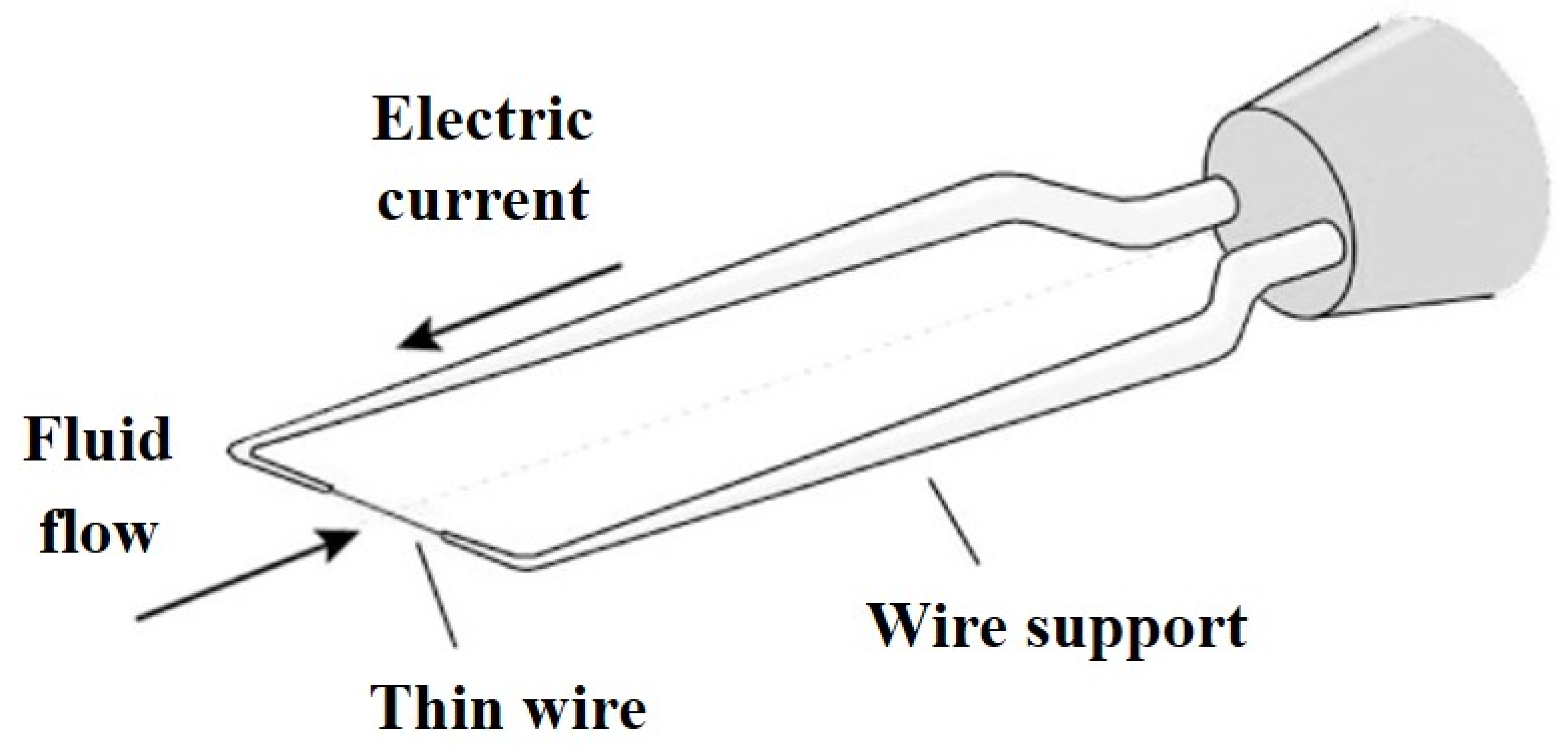
2.1.3. Hot Film Anemometer (HFA)
2.1.4. Pulsed Wire Anemometer (PWA)
2.2. Non-Intrusive and Quasi-Non-Intrusive or Minimally Intrusive Techniques
2.2.1. Laser Doppler Velocimetry (LDV)
2.2.2. Digital Image Analysis (DIA) Techniques
2.2.3. Other Non-Intrusive and Quasi-Non-Intrusive or Minimally Intrusive Techniques
2.3. Accuracy of Laboratory Techniques
3. Numerical Simulations of Turbulent Flows
3.1. Turbulence Simulation and Energy Research
3.2. Overview of Turbulence Simulation and Modeling
3.3. Direct Numerical Simulations (DNS)
3.4. Large-Eddy Simulations (LES)
3.5. Reynolds-Averaged Navier–Stokes Simulations (RANS)
3.6. Scale Resolving Simulations (SRS)
3.7. Numerical Methods and Codes for Turbulent Flows Simulations
4. Discussion: Advantages and Disadvantages, Challenges, Trends, and Taxonomic Analysis of Laboratory and Numerical Techniques
5. Conclusions
Author Contributions
Funding
Data Availability Statement
Conflicts of Interest
Abbreviations
| DES | Detached Eddy Simulations |
| DNS | Direct Numerical Simulation |
| EVM | Eddy Viscosity Model |
| FLOPS | Floating-point operations per second |
| GPU | Graphical Processing Unit |
| LES | Large Eddy Simulation |
| RANS | Reynolds-Averaged Navier–Stokes |
| RSM | Reynolds Stress Model |
| SGS | Subgrid Scale |
| SRS | Scale-Resolving Simulations |
| UQ | Uncertainty Quantification |
| URANS | Unsteady Reynolds-Averaged Navier–Stokes |
| WMLES | Wall-Modeled Large Eddy Simulation |
References
- Tennekes, H.; Lumley, J.L. A First Course in Turbulence; MIT Press: Cambridge, MA, USA, 1972. [Google Scholar]
- Falkovich, G.; Gawȩdzki, K.; Vergassola, M. Particles and fields in fluid turbulence. Rev. Mod. Phys. 2001, 73, 913–975. [Google Scholar] [CrossRef]
- Davidson, P.A. Turbulence: An Introduction For Scientists and Engineers; Oxford University Press: Oxford, MS, USA, 2009. [Google Scholar]
- Marusic, I.; Broomhall, S. Leonardo da Vinci and Fluid Mechanics. Annu. Rev. Fluid Mech. 2021, 53, 1–25. [Google Scholar] [CrossRef]
- Reynolds, O. An experimental investigation of the circumstances which determine whether the motion of water shall be direct or sinuous, and of the law of resistance in parallel channels. Phil. Trans. R. Soc. 1993, 174, 935–982. [Google Scholar]
- Jackson, D.; Launder, B. Osborne Reynolds and the publication of his papers on turbulent flow. Annu. Rev. Fluid Mech. 2007, 39, 19–35. [Google Scholar] [CrossRef] [Green Version]
- Frisch, U. Turbulence: The Legacy of A.N. Kolmogorov, 1st ed; Cambridge University Press: Cambridge, UK, 1995. [Google Scholar]
- Goldstein, M.E.; Hultgren, L.S. Boundary-Layer receptivity to long-wave free-stream disturbances. Annu. Rev. Fluid Mech. 1989, 21, 137–166. [Google Scholar] [CrossRef]
- Ferraris, A.; Pinheiro, H.C.; Airale, A.G.; Carello, M.; Polato, D.B. City Car Drag Reduction by Means of Flow Control Devices; SAE Technical Paper, 2020–36–0080; SAE: Warrendale, PA, USA, 2021. [Google Scholar]
- Palanivendhan, M.; Chandradass, J.; Kumar Bannaravuri, P.; Philip, J.; Shubham, K. Aerodynamic simulation of optimized vortex generators and rear spoiler for performance vehicles. Mater. Today Proc. 2021, 45, 7228–7238. [Google Scholar] [CrossRef]
- Igali, D.; Mukhmetov, O.; Zhao, Y.; Fok, S.C.; Teh, S.L. Comparative analysis of turbulence models for automotive aerodynamic simulation and design. Int. J. Automot. Technol. 2019, 20, 1145–1152. [Google Scholar] [CrossRef]
- Kurec, K.; Piechna, J. Influence of Side Spoilers on the Aerodynamic Properties of a Sports Car. Energies 2019, 12, 4697. [Google Scholar] [CrossRef] [Green Version]
- Wang, J.; Minelli, G.; Dong, T.; He, K.; Krajnović, S. Impact of the bogies and cavities on the aerodynamic behaviour of a high-speed train. An IDDES study. J. Wind Eng. Ind. Aerodyn. 2020, 207, 104406. [Google Scholar] [CrossRef]
- Wang, J.; Minelli, G.; Dong, T.; He, K.; Gao, G.; Krajnović, S. An IDDES investigation of Jacobs bogie effects on the slipstream and wake flow of a high-speed train. J. Wind Eng. Ind. Aerodyn. 2020, 202, 104233. [Google Scholar] [CrossRef]
- Zhang, J.; Wang, J.; Wang, Q.; Xiong, X.; Gao, G. A study of the influence of bogie cut outs’ angles on the aerodynamic performance of a high-speed train. J. Wind Eng. Ind. Aerodyn. 2018, 175, 153–168. [Google Scholar] [CrossRef]
- Bollt, S.A.; Bewley, G.P. How to extract energy from turbulence in flight by fast tracking. J. Fluid Mech. 2021, 921, A18. [Google Scholar] [CrossRef]
- Varshney, M.; Baig, M.; Hasan, N. Turbulent Drag Reduction on an Aircraft Wing Using Wall Jets. In Proceedings of the AIAA Aviation 2019 Forum, Dallas, TX, USA, 17–21 June 2019. [Google Scholar]
- Miller, G.D.; Crouch, J.D.; Strelets, M. Near-field evolution of trailing vortices behind aircraft with flaps deployed. In Proceedings of the 34th AIAA Fluid Dynamics Conference and Exhibit, Portland, OR, USA, 28 June–1 July 2004. [Google Scholar]
- Kazmouz, S.J.; Scarcelli, R.; Kim, J.; Cheng, Z.; Liu, S.; Dai, M.; Pomraning, E.; Senecal, P.K.; Lee, S.Y. High-Fidelity Energy Deposition Ignition Model Coupled With Flame Propagation Models at Engine-Like Flow Conditions. In Proceedings of the ASME 2021 Internal Combustion Engine Division Fall Technical Conference, Online, 13–15 October 2021. [Google Scholar]
- Balmelli, M.; Zsiga, N.; Merotto, L.; Soltic, P. Effect of the Intake Valve Lift and Closing Angle on Part Load Efficiency of a Spark Ignition Engine. Energies 2020, 13, 1682. [Google Scholar] [CrossRef] [Green Version]
- Krastev, V.K.; Di-Ilio, G. On the application of hybrid turbulence models for fuel spray simulation in modern internal combustion engines. AIP Conf. Proc. 2019, 2191, 020095. [Google Scholar]
- Zhong, C.; Hu, L.; Gong, J.; Wu, C.; Wang, S.; Zhu, X. Effects analysis on aerodynamic noise reduction of centrifugal compressor used for gasoline engine. Appl. Acoust. 2021, 180, 108104. [Google Scholar] [CrossRef]
- Polacsek, C.; Cader, A.; Buszyk, M.; Barrier, R.; Gea-Aguilera, F.; Posson, H. Aeroacoustic design and broadband noise predictions of a fan stage with serrated outlet guide vanes. Phys. Fluids 2020, 32, 107107. [Google Scholar] [CrossRef]
- Jun, F.; ZengFeng, Z.; Wei, C.; Hong, M.; JianXing, L. Computational fluid dynamics simulations of the flow field characteristics in a novel exhaust purification muffler of diesel engine. J. Low Freq. Noise Vib. Act. Control 2018, 37, 816–833. [Google Scholar] [CrossRef] [Green Version]
- Bellini, A.; Golzio, A.; Magri, T.; Ferrarese, S.; Pession, G.; Manfrin, M. Sensitivity of pollutant concentrations to the turbulence schemes of a dispersion modelling chain over complex orography. Atmosphere 2022, 13, 167. [Google Scholar] [CrossRef]
- Huertas, J.I.; Martinez, D.S.; Prato, D.F. Numerical approximation to the effects of the atmospheric stability conditions on the dispersion of pollutants over flat areas. Sci. Rep. 2021, 11, 11566. [Google Scholar] [CrossRef]
- Defforge, C.L.; Carissimo, B.; Bocquet, M.; Bresson, R.; Armand, P. Improving Numerical Dispersion Modelling in Built Environments with Data Assimilation Using the Iterative Ensemble Kalman Smoother. Bound.-Layer Meteorol. 2021, 179, 209–240. [Google Scholar] [CrossRef]
- Di Bernardino, A.; Monti, P.; Leuzzi, G.; Querzoli, G. Pollutant fluxes in two-dimensional street canyons. Urban Clim. 2018, 24, 80–93. [Google Scholar] [CrossRef]
- Liang, J.H.; Liu, J.; Benfield, M.; Justic, D.; Holstein, D.; Liu, B.; Hetl, R.; Kobashi, D.; Dong, C.; Dong, W. Including the effects of subsurface currents on buoyant particles in Lagrangian particle tracking models: Model development and its application to the study of riverborne plastics over the Louisiana/Texas shelf. Ocean Model. 2021, 167, 101879. [Google Scholar] [CrossRef]
- Chen, B.; Yang, D.; Meneveau, C.; Chamecki, M. Effects of swell on transport and dispersion of oil plumes within the ocean mixed layer. J. Geophys. Res. Oceans 2016, 121, 3564–3578. [Google Scholar] [CrossRef] [Green Version]
- Lee, K.; Nedwed, T.; Prince, R.C.; Palandro, D. Lab tests on the biodegradation of chemically dispersed oil should consider the rapid dilution that occurs at sea. Mar. Pollut. Bull. 2013, 73, 314–318. [Google Scholar] [CrossRef] [PubMed]
- Chiniforoush, N.; Latif-Shabgahi, L.; Azadi, M. A method to estimate the probability of strong winds occurrence using weather radar data. Wind Energy 2022, 25, 221–236. [Google Scholar] [CrossRef]
- Tsiringakis, A.; Theeuwes, N.E.; Barlow, J.F.; Steeneveld, G.J. Interactions Between the Nocturnal Low-Level Jets and the Urban Boundary Layer: A Case Study over London. Bound.-Layer Meteorol. 2022, 183, 249–272. [Google Scholar] [CrossRef]
- Verbitsky, V.S.; Khodzinskaya, A.G. Hydraulic Model of Atmospheric Turbulence. Power Technol. 2021, 55, 509–518. [Google Scholar] [CrossRef]
- Di Bernardino, A.; Monti, P.; Leuzzi, G.; Querzoli, G. On the Lagrangian and Eulerian Time Scales of Turbulence Within a Two-Dimensional Array of Obstacles. Bound.-Layer Meteorol. 2022, 184, 375–379. [Google Scholar] [CrossRef]
- Lu, B.; Li, Q.S. Large eddy simulation of the atmospheric boundary layer to investigate the Coriolis effect on wind and turbulence characteristics over different terrains. J. Wind. Eng. Ind. Aerodyn. 2022, 220, 104845. [Google Scholar] [CrossRef]
- Tkachenko, E.; Debolskiy, A.; Mortikov, E. Large-eddy simulation and parametrization of turbulence decay in atmospheric boundary layer. No. EGU22-12569. In Proceedings of the Copernicus Meetings, Vienna, Austria, 23–27 May 2022. [Google Scholar] [CrossRef]
- Barbosa, P.H.A.; Cataldi, M.; Freire, A.P.S. Wind tunnel simulation of atmospheric boundary layer flows. J. Braz. Soc. Mech. Sci. 2002, 24, 177–185. [Google Scholar] [CrossRef]
- Soto, V.; Ulloa, C.; Garcia, X. A CFD Design Approach for Industrial Size Tubular Reactors for SNG Production from Biogas (CO2 Methanation). Energies 2021, 14, 6175. [Google Scholar] [CrossRef]
- Janoszek, T.; Masny, W. CFD Simulations of Allothermal Steam Gasification Process for Hydrogen Production. Energies 2021, 14, 1532. [Google Scholar] [CrossRef]
- Mularski, J.; Modliński, N. Impact of Chemistry–Turbulence Interaction Modeling Approach on the CFD Simulations of Entrained Flow Coal Gasification. Energies 2020, 13, 6467. [Google Scholar] [CrossRef]
- Pacciani, R.; Marconcini, M.; Bertini, F.; Rosa Taddei, S.; Spano, E.; Zhao, Y.; Akolekar, H.D.; Sandberg, R.D.; Arnone, A. Assessment of Machine-Learned Turbulence Models Trained for Improved Wake-Mixing in Low-Pressure Turbine Flows. Energies 2021, 14, 8327. [Google Scholar] [CrossRef]
- Duthé, G.; Abdallah, I.; Barber, S.; Chatzi, E. Modeling and Monitoring Erosion of the Leading Edge of Wind Turbine Blades. Energies 2021, 14, 7262. [Google Scholar] [CrossRef]
- Yang, Z.; Yin, M.; Xu, Y.; Zhang, Z.; Zou, Y.; Dong, Z. A multi-point method considering the maximum power point tracking dynamic process for aerodynamic optimization of variable-speed wind turbine blades. Energies 2016, 9, 425. [Google Scholar] [CrossRef] [Green Version]
- Wu, C.; Yan, W.; Chen, R.; Liu, Y.; Li, G. Numerical study on targeted delivery of magnetic drug particles in realistic human lung. Powder Technol. 2022, 397, 116984. [Google Scholar] [CrossRef]
- Rajendran, R.R.; Banerjee, A. Effect of non-Newtonian dynamics on the clearance of mucus From bifurcating Lung airway models. J. Biomech. Eng. 2021, 143, 021011. [Google Scholar] [CrossRef]
- Singh, D.; Jain, A.; Paul, A.R. Numerical Study on particle Deposition in healthy Human Airways and Airways with Glomus Tumor. In Advances in Biomedical Engineering and Technology; Springer: Singapore, 2021; pp. 379–390. [Google Scholar]
- Bourguet, R.; Braza, M.; Harran, G.; El Akoury, R. Anisotropic Organised Eddy Simulation for the prediction of non-equilibrium turbulent flows around bodies. J. Fluids Struct. 2008, 24, 1240–1251. [Google Scholar] [CrossRef] [Green Version]
- Cafiero, G.; Vassilicos, J.C. Non-equilibrium turbulence scalings and self-similarity in turbulent planar jets. Proc. R. Soc. A 2019, 475, 20190038. [Google Scholar] [CrossRef] [Green Version]
- Lapsa, A.P.; Dahm, W.J. Stereo particle image velocimetry of nonequilibrium turbulence relaxation in a supersonic boundary layer. Exp. Fluids 2011, 50, 89–108. [Google Scholar] [CrossRef]
- He, Z.; Zhao, L.; Chen, J.; Yu, C.H.; Meiburg, E. Particle-laden gravity currents interacting with stratified ambient water using direct numerical simulations. Environ. Earth Sci. 2021, 80, 732. [Google Scholar] [CrossRef]
- Berk, T.; Coletti, F. Transport of inertial particles in high-Reynolds-number turbulent boundary layers. J. Fluid Mech. 2020, 903, A18. [Google Scholar] [CrossRef]
- Boffetta, G.; Lacorata, G.; Redaelli, G.; Vulpiani, A. Detecting barriers to transport: A review of different techniques. Phys. D Nonlinear Phenom. 2001, 159, 58–70. [Google Scholar] [CrossRef] [Green Version]
- Clauser, F.H. The turbulent boundary layer. Adv. Appl. Mech. 1956, 4, 1–51. [Google Scholar]
- Piomelli, U. Recent advances in the numerical simulation of rough-wall boundary layers. Phys. Chem. Earth 2019, 113 Pt A/B/C, 63–72. [Google Scholar] [CrossRef]
- Ohya, Y. Wind-tunnel study of atmospheric stable boundary layers over a rough surface. Bound.-Layer Meteorol. 2001, 98, 57–82. [Google Scholar] [CrossRef]
- Otten, L.J., III; Van Kuren, J.T. Artificial thickening of high subsonic Mach number boundary layers. AIAA J. 1976, 14, 1528–1533. [Google Scholar] [CrossRef]
- Kornilov, V.I.; Boiko, A.V. Wind-tunnel simulation of thick turbulent boundary layer. Thermophys. Aeromech. 2012, 19, 247–258. [Google Scholar] [CrossRef]
- Jiao, F.; Wang, M.; Hu, M.; He, Y. Structural optimization of self-supporting rectangular converging-diverging tube heat exchanger. Energies 2022, 15, 1133. [Google Scholar] [CrossRef]
- Grądziel, S.; Majewski, K.; Majdak, M.; Mika, Ł.; Sztekler, K.; Kobyłecki, R.; Zarzycki, R.; Pilawska, M. Testing of heat transfer coefficients and frictional losses in internally ribbed tubes and verification of results through CFD modelling. Energies 2021, 15, 207. [Google Scholar] [CrossRef]
- Prończuk, M.; Krzanowska, A. Experimental investigation of the heat transfer and pressure drop inside tubes and the shell of a minichannel shell and tube type heat exchanger. Energies 2021, 14, 8563. [Google Scholar] [CrossRef]
- Ngwa, M.; Gao, L.; Li, B. Numerical and Experimental Investigation of the Conjugate Heat Transfer for a High-Pressure Pneumatic Control Valve Assembly. Entropy 2022, 24, 451. [Google Scholar] [CrossRef]
- Kovasznay, L.S. Turbulence in supersonic flow. J. Aeronaut. Sci. 1953, 20, 657–674. [Google Scholar] [CrossRef]
- Volov, V.; Elisov, N.; Lyaskin, A. Numerical Investigation of the Secondary Swirling in Supersonic Flows of Various Nature Gases. Energies 2021, 14, 8122. [Google Scholar] [CrossRef]
- Li, Y.; Chen, L.; Li, H.; Wu, Y.; Chen, S. Numerical and Experimental Validation of a Supersonic Mixing Layer Facility. Appl. Sci. 2022, 12, 5489. [Google Scholar] [CrossRef]
- Rosenweig, R.E.; Ottino, J.M. The kinematics of mixing: Stretching, chaos, and transport. AIChE J. 1992, 38, 316–317. [Google Scholar]
- Mackenzie, D.; Honaman, R.K. The velocity of flame propagation in engine cylinders. SAE Trans. 1920, 15, 299–317. [Google Scholar]
- Tice, P.S. Factors involved in fuel utilization. SAE Trans. 1920, 15, 293–307. [Google Scholar]
- Bellet, M.H. Nouveau mode d’application du tube de pitot-darcy à la mesure de la vitesse des conduites d’eau sous pression. Houille Blanche 1905, 4, 156. [Google Scholar] [CrossRef] [Green Version]
- Ezzeddine, W.; Schutz, J.; Rezg, N. Pitot sensor air flow measurement accuracy: Causal modelling and failure risk analysis. Flow. Meas. Instrum. 2019, 65, 7–15. [Google Scholar] [CrossRef]
- Ariante, G.; Ponte, S.; Papa, U.; Del-Core, G. Estimation of airspeed, angle of attack, and sideslip for small unmanned aerial vehicles (UAVs) using a micro-pitot tube. Electronics 2021, 10, 2325. [Google Scholar] [CrossRef]
- Zhang, Q.; Xu, Y.; Wang, X.; Yu, Z.; Deng, T. Real-time wind field estimation and pitot tube calibration Using an extended Kalman Filter. Mathematics 2021, 9, 646. [Google Scholar] [CrossRef]
- Rautenberg, A.; Allgeier, J.; Jung, S.; Bange, J. Calibration procedure and accuracy of wind and turbulence measurements with five-hole probes on fixed-wing unmanned aircraft in the atmospheric boundary layer and wind turbine wakes. Atmosphere 2019, 10, 124. [Google Scholar] [CrossRef] [Green Version]
- Mironov, S.; Aniskin, V.; Korotaeva, T.; Tsyryulnikov, I. Effect of the Pitot tube on measurements in Supersonic axisymmetric underexpanded microjets. Micromachines 2019, 10, 235. [Google Scholar] [CrossRef]
- D’Amato, F.; Viciani, S.; Montori, A.; Barucci, M.; Morreale, C.; Bertagna, S.; Migliavacca, G. Spectroscopic techniques versus Pitot tube for the measurement of flow velocity in narrow ducts. Sensors 2020, 20, 7349. [Google Scholar] [CrossRef]
- Macián-Pérez, J.; Vallés-Morán, F.; Sánchez-Gómez, S.; De-Rossi-Estrada, M.; García-Bartual, R. Experimental characterization of the hydraulic jump profile and velocity distribution in a stilling basin physical model. Water 2020, 12, 1758. [Google Scholar] [CrossRef]
- Lomass, C.G. Fundamentals of Hot-Wire Anemometry; Cambridge University Pres: Cambridge, MA, USA, 1986. [Google Scholar] [CrossRef]
- Bruun, H.H. Hot-Wire Anemometry: Principles and Signal Analysis; Oxford University Press: Oxford, UK, 1995. [Google Scholar]
- Bradbury, L.J.S. Measurements with a pulsed-wire and a hot-wire anemometer in the highly turbulent wake of a normal flat plate. J. Fluid Mech. 1976, 77, 473–497. [Google Scholar] [CrossRef]
- Heist, D.K.; Castro, I.P. Point measurement of turbulence quantities in separated flows—A comparison of techniques. Meas. Sci. Technol. 1996, 7, 1444–1450. [Google Scholar] [CrossRef]
- Leder, A. Dynamics of fluid mixing in separated flows. Phys. Fluids Fluid Dyn. 1991, 3, 1741–1748. [Google Scholar] [CrossRef]
- Boiko, A.V.; Dovgal, A.V.; Scherbakov, V.A.; Simonov, O.A. Effects of laminar-turbulent transition in separation bubbles. In Separated Flows Jets; Springer: Berlin/Heidelberg, Germany, 1991; pp. 565–572. [Google Scholar]
- Torii, S.; Fuse, H. Effects of the length scale of free-stream turbulence and cylinder size on heat transfer in laminar separated flows. In Experimental Heat Transfer, Fluid Mechanics and Thermodynamics; Elsevier: Amsterdam, The Netherlands, 1993; pp. 619–624. [Google Scholar]
- Stornelli, V.; Ferri, G.; Leoni, A.; Pantoli, L. The assessment of wind conditions by means of hotwire sensors and a modified Wheatstone bridge architecture. Sens. Actuators A Phys. 2017, 262, 130–139. [Google Scholar] [CrossRef]
- Wilson, J.S. Sensor Technology Handbook; Elsevier: Amsterdam, The Netherlands, 2005. [Google Scholar]
- Kovasznay, L.S. The hot-wire anemometer in supersonic flow. J. Aeronaut. Sci. 1950, 17, 565–572. [Google Scholar] [CrossRef]
- Weiss, J.; Knauss, H.; Wagner, S.; Kosinov, A.D. Constant temperature hot-wire measurements in a short duration supersonic wind tunnel. Aeronaut. J. 2001, 105, 435–450. [Google Scholar] [CrossRef]
- Sakaue, S.; Kamata, M.; Arai, T. Turbulent Intensity in Supersonic Mixing Transition by Streamwise Vortices–Fluctuation Measurements by Hot-wire Anemometer and PIV. Trans. Jpn. Soc. Aeronaut. Space Sci. Aerosp. Technol. Jpn. 2020, 18, 258–265. [Google Scholar] [CrossRef]
- Gatski, T.B.; Bonnet, J.P. Compressibility, Turbulence and High Speed Flow; Elsevier Science: Amsterdam, The Netherlands, 2009. [Google Scholar] [CrossRef]
- Hwang, D.; Ahn, K. Experimental study on dynamic combustion characteristics in swirl-stabilized combustors. Energies 2021, 14, 1609. [Google Scholar] [CrossRef]
- Lee, J.; Lee, J.H. Study on turbulence intensity behavior under a large range of temperature variation. Processes 2020, 8, 1403. [Google Scholar] [CrossRef]
- Hinze, J.O. Turbulence: An Introduction to It’s Mechanisms and Theory; McGraw-Hill: New York, NY, USA, 1959. [Google Scholar]
- Freymuth, P. Feedback Control Theory for Constant-Temperature Hot-Wire Anemometers. Rev. Sci. Instrum. 1967, 38, 677–681. [Google Scholar] [CrossRef]
- Yatskikh, A.A.; Kosinov, A.D.; Semionov, N.V.; Smorodsky, B.V.; Ermolaev, Y.G.; Kolosov, G.L. Investigation of laminar-turbulent transition of supersonic boundary layer by scanning constant temperature hot-wire anemometer. AIP Conf. Proc. 2018, 2027, 040041. [Google Scholar]
- Inasawa, A.; Takagi, S.; Asai, M. Improvement of the signal-to-noise ratio of the constant-temperature hot-wire anemometer using the transfer function. Meas. Sci. Technol. 2020, 31, 055302. [Google Scholar] [CrossRef]
- Ligęza, P. Optimization of single-sensor two-state hot-wire anemometer transmission bandwidth. Sensors 2008, 8, 6747–6760. [Google Scholar] [CrossRef] [Green Version]
- Ligęza, P. Constant-temperature anemometer bandwidth shape determination for energy spectrum Study of turbulent flows. Energies 2021, 14, 4495. [Google Scholar] [CrossRef]
- Wang, D.; Xiong, W.; Zhou, Z.; Zhu, R.; Yang, X.; Li, W.; Jiang, Y.; Zhang, Y. Highly sensitive hot-wire anemometry based on macro-sized double-walled carbon nanotube strands. Sensors 2017, 17, 1756. [Google Scholar] [CrossRef] [PubMed]
- Njegovec, M.; Pevec, S.; Donlagic, D. Optical Micro-Wire Flow-Velocity Sensor. Sensors 2021, 21, 4025. [Google Scholar] [CrossRef] [PubMed]
- Nam, K.; Kim, H.; Kwon, Y.; Choi, G.; Kim, T.; Kim, C.; Cho, D.; Lee, J.; Ko, H. A Four-Channel Low-noise readout IC for air flow measurement using hot wire anemometer in 0.18 μm CMOS technology. Sensors 2021, 21, 4694. [Google Scholar] [CrossRef] [PubMed]
- Hoshino, T.; Ito, S. A split hot film anemometer for two-dimensional flow field measure. Bull. Univ. Osaka Prefect. Ser. A Eng. Nat. Sci. 1984, 33, 81–88. [Google Scholar]
- Kadam, S.M.; Thaker, J.P.; Banerjee, J. Analysis of turbulence in entrance regime of rectangular duct using hot film anemometer. In Fluid Mechanics and Fluid Power–Contemporary Research; Springer: New Delhi, India, 2017; pp. 605–614. [Google Scholar]
- Tavakol, M.M.; Yaghoubi, M.; Ahmadi, G. Experimental and numerical analysis of airflow around a building model with an array of domes. J. Build. Eng. 2021, 34, 101901. [Google Scholar] [CrossRef]
- Cui, P.Y.; Zhang, Y.; Chen, W.Q.; Zhang, J.H.; Luo, Y.; Huang, Y.D. Wind-tunnel studies on the characteristics of indoor/outdoor airflow and pollutant exchange in a building cluster. J. Wind Eng. Ind. Aerodyn. 2021, 214, 104645. [Google Scholar] [CrossRef]
- Bai, Y.; Meng, X.; Guo, H.; Liu, D.; Jia, Y.; Cui, P. Design and validation of an adaptive low-power detection algorithm for three-cup anemometer. Measurement 2021, 172, 108887. [Google Scholar] [CrossRef]
- Ikami, T.; Fujita, K.; Nagai, H.; Yorita, D. Measurement of boundary layer transition on oscillating airfoil using cntTSP in low-speed wind tunnel. Meas. Sci. Technol. 2021, 32, 075301. [Google Scholar] [CrossRef]
- Krogstad, P.A.; Sinangil, M. A comparison of some lowspeed velocity measurement techniques. In Proceedings of the Euromech 202 Colloquium, Amstrdam, The Netherlands, 7–10 October 1985. [Google Scholar]
- Kitzing, H.; Sammler, B. Analysis of hot-wire measurements in high-turbulent three-dimensional flows. DISA Inf. 1984, 29, 14–19. [Google Scholar]
- Handford, P.M.; Bradshaw, P. The pulsed-wire anemometer. Exp. Fluids 1989, 7, 125–132. [Google Scholar] [CrossRef]
- Bradbury, L.J.S. Examples of the use of the pulsed wire anemometer in highly turbulent flow. In Proceedings of the Dynamic Flow Conference 1978 on Dynamic Measurements in Unsteady Flows, Marseille, France, 11–14 September 1978; Springer: Dordrecht, The Netherlands, 1978; pp. 489–509. [Google Scholar]
- Bradbury, L.J.S.; Castro, I.P. A pulsed-wire technique for velocity measurements in highly turbulent flows. J. Fluid Mech. 1971, 49, 657–691. [Google Scholar] [CrossRef]
- Hunt, A.; Castro, I.P. Scalar dispersion in model building wakes. J. Wind. Eng. Ind. Aerodyn. 1984, 17, 89–115. [Google Scholar] [CrossRef]
- Luo, K.; Yu, H.; Dai, Z.; Fang, M.; Fan, J. CFD simulations of flow and dust dispersion in a realistic urban area. Eng. Appl. Comput. Fluid Mech. 2016, 10, 228–242. [Google Scholar] [CrossRef] [Green Version]
- Tominaga, Y.; Shirzadi, M. Wind tunnel measurement of three-dimensional turbulent flow structures around a building group: Impact of high-rise buildings on pedestrian wind environment. Build. Environ. 2021, 206, 108389. [Google Scholar] [CrossRef]
- Brown, M.J.; Lawson, R.E.; Decroix, D.S.; Lee, R.E. Mean flow and turbulence measurement around a 2-D Array of buildings in a wind tunnel. In Proceedings of the AMS 11th Joint Conference on the Applications of Air Pollution Meteorology, Long Beach, CA, USA, 9–14 January 2000. [Google Scholar]
- Brown, M.J.; Lawson, R.E.; Decroix, D.S.; Lee, R.E. Comparison of centerline velocity measurements obtained around 2D and 3D building arrays in a wind tunnel. Int. Soc. Environ. Hydraul. Tempe AZ 2001, 5, 495. [Google Scholar]
- Goldstein, R. Fluid Mechanics Measurements, 2nd ed.; CRC Press: Boca Raton, FL, USA, 2017. [Google Scholar]
- Durst, F.; Melling, A.; Whitelaw, J.H. Principles and practice of Laser-Doppler anemometry. Nasa Sti/Recon Tech. Rep. 1976, 76, 47019. [Google Scholar] [CrossRef]
- Tavoularis, S. Measurement in Fluid Mechanics; Cambridge University Press: Cambridge, UK, 2005. [Google Scholar]
- Hennessy, W. Flow and Level Sensors. In Sensor Technology Handbook; Wilson, J.S., Ed.; Elsevier: Amsterdam, The Netherlands, 2005; pp. 237–254. [Google Scholar]
- Sayeed-Bin-Asad, S.; Lundström, T.; Andersson, A. Study the flow behind a semi-circular Step cylinder (Laser Doppler Velocimetry (LDV) and Computational Fluid Dynamics (CFD)). Energies 2017, 10, 332. [Google Scholar] [CrossRef] [Green Version]
- Agrawal, R.; Ng, H.C.H.; Davis, E.A.; Park, J.S.; Graham, M.D.; Dennis, D.J.; Poole, R.J. Low- and High-Drag Intermittencies in Turbulent Channel Flows. Entropy 2020, 22, 1126. [Google Scholar] [CrossRef] [PubMed]
- Le Bideau, D.; Mandin, P.; Benbouzid, M.; Kim, M.; Sellier, M.; Ganci, F.; Inguanta, R. Eulerian Two-Fluid Model of Alkaline Water Electrolysis for Hydrogen Production. Energies 2020, 13, 3394. [Google Scholar] [CrossRef]
- Ofner, B. Phase Doppler Anemometry (PDA). In Optical Measurements, 2nd ed.; Mayinger, F., Feldmann, O., Eds.; Springer: Berlin/Heidelberg, Germany, 2001; pp. 139–152. [Google Scholar]
- Suzuki, T.; Shiozaki, T. A New combustion system for the diesel engine and Its analysis via high speed photography. SAE Trans. 1977, 770674, 2519–2533. [Google Scholar]
- Fernando, H.J.S. Handbook of Environmental Fluid Dynamics; CRC Press: Boca Raton, FL, USA, 2013. [Google Scholar]
- Mayinger, F.; Feldmann, O. Optical Measurements, 2nd ed.; Mayinger, F., Feldmann, O., Eds.; Springer: Berlin/Heidelberg, Germany, 2001. [Google Scholar]
- Correia, L.P.; Rafael, S.; Sorte, S.; Rodrigues, V.; Borrego, C.; Monteiro, A. High-Resolution Analysis of Wind Flow Behavior on Ship Stacks Configuration: A Portuguese Case Study. Atmosphere 2021, 12, 303. [Google Scholar] [CrossRef]
- Westerweel, J.; Elsinga, G.E.; Adrian, R.J. Particle image velocimetry for complex and turbulent Flows. Annu. Rev. Fluid Mech. 2013, 45, 409–436. [Google Scholar] [CrossRef]
- Pickering, C.J.D.; Halliwell, N.A. Laser speckle photography and particle image velocimetry: Photographic film noise. Appl. Opt. 1984, 23, 2961. [Google Scholar] [CrossRef] [PubMed]
- Pusey, P.N. Photon correlation study of laser speckle produced by a moving rough surface. J. Phys. D Appl. Phys. 1976, 9, 1399–1409. [Google Scholar] [CrossRef]
- Vogel, A.; Lauterborn, W. Time resolved particle image velocimetry. Opt. Lasers Eng. 1988, 9, 277–294. [Google Scholar] [CrossRef]
- Kahler, C.J.K.; Astarita, T.; Vlachos, P.P.; Sakakibara, J.; Hain, R.; Discetti, S.; La Foy, R.; Cierpka, C. Main results of the 4th International PIV Challenge. Exp. Fluids 2016, 57, 97. [Google Scholar] [CrossRef] [Green Version]
- Falchi, M.; Querzoli, G.; Romano, G.P. Robust evaluation of the dissimilarity between interrogation windows in image velocimetry. Exp. Fluids 2006, 41, 279–293. [Google Scholar] [CrossRef]
- Hinrichs, H.; Hinsch, K.D.; Kuhfahl, G.; Meinlschmidt, P. 3-D velocity registration from optically processed stereoscopic particle image velocimetry records. In Optics in Complex Systems; SPIE: Bellingham, WA, USA, 1990; pp. 542–543. [Google Scholar]
- Brücker, C. 3D scanning PIV applied to an air flow in a motored engine using digital high-speed video. Meas. Sci. Technol. 1997, 8, 1480–1492. [Google Scholar] [CrossRef]
- Liu, X.; Katz, J. Instantaneous pressure and material acceleration measurements using a four-exposure PIV system. Exp Fluids 2006, 41, 227–240. [Google Scholar] [CrossRef]
- Williamson, P.N.; Docherty, P.D.; Yazdi, S.G.; Khanafer, A.; Kabaliuk, N.; Jermy, M.; Geoghegan, P.H. Review of the development of hemodynamic modeling techniques to capture flow behavior in arteries affected by aneurysm, atherosclerosis, and stenting. J. Biomech. Eng. 2022, 144, 040802. [Google Scholar] [CrossRef] [PubMed]
- Noor, A.F.H.M.; Johari, N.H. Brief review on recent technology in particle image velocimetry studies on hemodynamics in carotid artery. In Human-Centered Technology for a Better; Tomorrow, M.H.A., Hassan, Z., Ahmad Manap, M.Z., Baharom, N.H., Johari, U.K., Jamaludin, M.H., Jalil, I., Sahat, M., Omar, M.N., Eds.; Springer: Singapore, 2022; pp. 267–277. [Google Scholar] [CrossRef]
- Jolley, M.J.; Russell, A.J.; Quinn, P.F.; Perks, M.T. Considerations when applying large-scale PIV and PTV for determining river flow velocity. Front. Water 2021, 3, 709269. [Google Scholar] [CrossRef]
- Scarano, F.; Jux, C.; Sciacchitano, A. Recent advancements towards large-scale flow diagnostics by robotic PIV. Fluid Dyn. Res. 2021, 53, 011401. [Google Scholar] [CrossRef]
- Jena, A.; Singh, A.P.; Agarwal, A.K. Challenges and opportunities of particle imaging velocimetry as a tool for internal combustion engine diagnostics. In Novel Internal Combustion Engine Technologies for Performance Improvement and Emission; Reduction, A.P., Agarwal, A.K., Eds.; Springer: Singapore, 2021; pp. 43–77. [Google Scholar] [CrossRef]
- Blocken, B.; Stathopoulos, T.; van Beeck, J.P.A.J. Pedestrian-level wind conditions around buildings: Review of wind-tunnel and CFD techniques and their accuracy for wind comfort assessment. Build. Environ. 2016, 100, 50–81. [Google Scholar] [CrossRef]
- Cao, X.; Liu, J.; Jiang, N.; Chen, Q. Particle image velocimetry measurement of indoor airflow field: A review of the technologies and applications. Energy Build. 2014, 69, 367–380. [Google Scholar] [CrossRef] [Green Version]
- Adrian, R.J.; Westerweel, J. Particle Image Velocimetry; Cambridge University Press: Cambridge, UK, 2011. [Google Scholar]
- Adrian, R.J. Twenty years of particle image velocimetry. Exp. Fluids 2005, 39, 159–169. [Google Scholar] [CrossRef]
- Buchhave, P. Particle image velocimetry—Status and trends. Exp. Therm. Fluid Sci. 1992, 5, 586–604. [Google Scholar] [CrossRef]
- Adrian, R.J. Particle-imaging techniques for experimental fluid mechanics. Annu. Rev. Fluid Mech. 1991, 23, 261–304. [Google Scholar] [CrossRef]
- Azadi, R.; Nobes, D.S. Local flow dynamics in the motion of slug bubbles in a flowing mini square channel. Int. J. Heat Mass Transf. 2021, 178, 121588. [Google Scholar] [CrossRef]
- Cornic, P.; Leclaire, B.; Champagnat, F.; Le Besnerais, G.; Cheminet, A.; Illoul, C.; Losfeld, G. Double-frame tomographic PTV at high seeding densities. Exp. Fluids 2020, 61, 23. [Google Scholar] [CrossRef] [Green Version]
- Fu, S.; Biwole, P.H.; Mathis, C. Particle tracking velocimetry for indoor airflow field: A review. Build. Environ. 2015, 87, 34–44. [Google Scholar] [CrossRef]
- Fu, S.; Jin, Y.; Kim, J.T.; Mao, Z.; Zheng, Y.; Chamorro, L. On the dynamics of flexible plates under rotational motions. Energies 2018, 11, 3384. [Google Scholar] [CrossRef] [Green Version]
- Misyura, S.Y.; Voytkov, I.S.; Morozov, V.S.; Manakov, A.Y.; Yashutina, O.S.; Ildyakov, A.V. An experimental study of combustion of a methane hydrate layer using thermal imaging and particle tracking velocimetry methods. Energies 2018, 11, 3518. [Google Scholar]
- Egorov, R.; Zaitsev, A.; Salgansky, E. Activation of the fuels with low reactivity using the high-power laser pulses. Energies 2018, 11, 3167. [Google Scholar] [CrossRef] [Green Version]
- Riha, Z.; Zelenak, M.; Soucek, K.; Hlavacek, A. Flow field analysis inside and at the outlet of the abrasive head. Materials 2021, 14, 3919. [Google Scholar] [CrossRef] [PubMed]
- Sabbagh, R.; Kazemi, M.A.; Soltani, H.; Nobes, D.S. Micro- and macro-scale measurement of flow velocity in porous media: A shadow imaging approach for 2D and 3D. Optics 2020, 1, 6. [Google Scholar] [CrossRef] [Green Version]
- Trieu, H.; Bergström, P.; Sjödahl, M.; Hellström, J.G.I.; Andreasson, P.; Lycksam, H. Photogrammetry for free surface flow velocity measurement: From laboratory to field measurements. Water 2021, 13, 1675. [Google Scholar] [CrossRef]
- Weis, S.; Schröter, M. Analyzing X-ray tomographies of granular packings. Rev. Sci. Instrum. 2017, 88, 051809. [Google Scholar] [CrossRef] [Green Version]
- Wu, Y.; Wu, X.; Yao, L.; Gréhan, G.; Cen, K. Direct measurement of particle size and 3D velocity of a gas–solid pipe flow with digital holographic particle tracking velocimetry. Appl. Opt. 2015, 54, 2514. [Google Scholar] [CrossRef]
- Bruecker, C.; Hess, D.; Watz, B. Volumetric calibration refinement of a multi-camera system based on tomographic reconstruction of particle images. Optics 2020, 1, 9. [Google Scholar] [CrossRef] [Green Version]
- Schanz, D.; Schröder, A.; Gesemann, S. Shake the box: A 4D PTV algorithm: Accurate and ghostless reconstruction of Lagrangian tracks in densely seeded flows. In Proceedings of the 17th International Symposium on Applications of Laser Techniques to Fluid Mechanics, Lisbon, Portugal, 7–10 July 2014. [Google Scholar]
- Kuschel, M.; Fitschen, J.; Hoffmann, M.; von Kameke, A.; Schlüter, M.; Wucherpfennig, T. Validation of novel lattice Boltzmann large eddy simulations (LB LES) for equipment characterization in biopharma. Processes 2021, 9, 950. [Google Scholar] [CrossRef]
- La Porta, A.; Voth, G.A.; Crawford, A.M.; Alexander, J.; Bodenschatz, E. Fluid particle accelerations in fully developed turbulence. Nature 2001, 409, 1017–1019. [Google Scholar] [CrossRef] [PubMed] [Green Version]
- Voth, G.A.; La Porta, A.; Crawford, A.M.; Alexander, J.; Bodenschatz, E. Measurement of particle accelerations in fully developed turbulence. J. Fluid Mech. 2002, 469, 121–160. [Google Scholar] [CrossRef] [Green Version]
- Mordant, N.; Pinton, J.-F.; Michel, O. Time-resolved tracking of a sound scatterer in a complex flow: Nonstationary signal analysis and applications. J. Acoust. Soc. Am. 2002, 112, 108–118. [Google Scholar] [CrossRef] [PubMed] [Green Version]
- Ferrari, S.; Rossi, L. Particle tracking velocimetry and accelerometry (PTVA) measurements applied to quasi-two-dimensional multi-scale flows. Exp. Fluids 2008, 44, 873–886. [Google Scholar] [CrossRef] [Green Version]
- Martinez, A.A.; Orlicz, G.C.; Prestridge, K.P. A new experiment to measure shocked particle drag using multi-pulse particle image velocimetry and particle tracking. Exp. Fluids 2015, 56, 1854. [Google Scholar] [CrossRef]
- Wang, Z.; Gao, Q.; Pan, C.; Feng, L.; Wang, J. Imaginary particle tracking accelerometry based on time-resolved velocity fields. Exp. Fluids 2017, 58, 113. [Google Scholar] [CrossRef]
- Voelker, C.; Maempel, S.; Kornadt, O. Measuring the human body’s microclimate using a thermal manikin. Indoor Air 2014, 24, 567–679. [Google Scholar] [CrossRef] [PubMed] [Green Version]
- Zhao, Y.; Ma, X.; Zhang, C.; Wang, H.; Zhang, Y. 3D real-time volumetric particle tracking velocimetry—A promising tool for studies of airflow around high-rise buildings. Build. Environ. 2020, 178, 106930. [Google Scholar] [CrossRef]
- Wang, H.; Zhang, H.; Hu, X.; Luo, M.; Wang, G.; Li, X.; Zhu, Y. Measurement of airflow pattern induced by ceiling fan with quad-view colour sequence particle streak velocimetry. Build Environ. 2019, 152, 122–134. [Google Scholar] [CrossRef] [Green Version]
- Wang, H.; Wang, G.; Li, X. Implementation of demand-oriented ventilation with adjustable fan network. Indoor Built Environ. 2020, 29, 621–635. [Google Scholar] [CrossRef]
- Grayver, A.V.; Noir, J. Particle streak velocimetry using ensemble convolutional neural networks. Exp Fluids 2020, 61, 38. [Google Scholar] [CrossRef] [Green Version]
- Fan, L.; Vena, P.; Savard, B.; Xuan, G.; Fond, B. High-resolution velocimetry technique based on the decaying streaks of phosphor particles. Opt. Lett. 2021, 46, 641. [Google Scholar] [CrossRef]
- Tsukamoto, Y.; Funatani, S. Application of feature matching trajectory detection algorithm for particle streak velocimetry. J. Vis. 2020, 23, 971–979. [Google Scholar] [CrossRef]
- Lucas, B.D.; Kanade, T. An Iterative Image Registration Technique with an Application to Stereo Vision. In Proceedings of the DARPA Image Understanding Workshop, Vancouver, BC, Canada, 24–28 August 1981; pp. 121–130. [Google Scholar]
- Shi, J. Tomasi Good features to track. In Proceedings of the IEEE Conference on Computer Vision and Pattern Recognition CVPR-94, Seattle, WA, USA, 21–23 June 1994; pp. 593–600. [Google Scholar]
- Miozzi, M.; Jacob, B.; Olivieri, A. Performances of feature tracking in turbulent boundary layer investigation. Exp Fluids 2008, 45, 765–780. [Google Scholar] [CrossRef]
- Mendes, L.P.N.; Ricardo, A.M.C.; Bernardino, A.J.M.; Ferreira, R.M.L. A comparative study of optical flow methods for fluid mechanics. Exp. Fluids 2022, 63, 7. [Google Scholar] [CrossRef]
- Horn, B.K.P.; Schunck, B.G. Determining optical flow. Artif. Intell. 1981, 17, 185–203. [Google Scholar] [CrossRef]
- Farnebäck, G. Two-frame motion estimation based on polynomial expansion. In Image Analysis; Bigun, J., Gustavsson, T., Eds.; Springer: Berlin, Germany, 2003; pp. 363–370. [Google Scholar]
- Liu, T.; Shen, L. Fluid flow and optical flow. J. Fluid Mech. 2008, 614, 253–291. [Google Scholar] [CrossRef]
- Zhang, Z.; Liu, Y.; Tian, J.; Liu, S.; Yang, B.; Xiang, L.; Yin, L.; Zheng, W. Study on reconstruction and feature tracking of silicone heart 3D surface. Sensors 2021, 21, 7570. [Google Scholar] [CrossRef]
- Lauriola, D.K.; Gomez, M.; Meyer, T.R.; Son, S.F.; Slipchenko, M.; Roy, S. High speed particle image velocimetry and particle tracking methods in reactive and non-reactive flows. In Proceedings of the AIAA Scitech 2019 Forum, San Diego, CA, USA, 7–11 January 2019. [Google Scholar]
- Ferrari, S.; Hu, Y.; Martinuzzi, R.J.; Kaiser, E.; Noack, B.R.; Östh, J.; Krajnović, S. Visualizing vortex clusters in the wake of a high-speed train. In Proceedings of the 2017 IEEE International Conference on Systems, Man, and Cybernetics (SMC), Banff, AB, USA, 5–8 October 2017. [Google Scholar]
- Stewart, T.B.; Judeikis, H.S. Measurements of spatial reactant and product concentrations in a flow reactor using laser-induced fluorescence. Rev. Sci. Instrum. 1974, 45, 1542–1545. [Google Scholar] [CrossRef]
- Melton, L.A.; Lipp, C.W. Criteria for quantitative PLIF experiments using high-power lasers. Exp. Fluids 2003, 35, 310–316. [Google Scholar] [CrossRef]
- Sutton, J.A.; Fisher, B.T.; Fleming, J.W. A laser induced fluorescence measurement for aqueous fluid flows with improved temperature sensitivity. Exp. Fluids 2008, 45, 869–881. [Google Scholar]
- Orea, D.; Al-Mahbobi, L.; Vaghetto, R.; Hassan, Y. Temperature dependence of laser induced fluorescence in molten LiF-NaF-KF Eutectic using Tb3+, Eu3+, and Dy3+. J. Lumin. 2022, 243, 118641. [Google Scholar] [CrossRef]
- Jiajian, Z.; Minggang, W.; Ge, W.; Bo, Y.; Yifu, T.; Rong, F.; Mingbo, S. Research progress of laser-induced fluorescence technology in combustion diagnostics. Chin. J. Laser 2021, 48, 0401005. [Google Scholar] [CrossRef]
- McManamen, B.; Donzis, D.A.; North, S.W.; Bowersox, R.D.W. Velocity and temperature fluctuations in a high-speed shock–turbulence interaction. J. Fluid Mech. 2021, 913, A10. [Google Scholar] [CrossRef]
- Savitskii, A.; Lobasov, A.; Sharaborin, D.; Dulin, V. Testing basic gradient turbulent transport models for swirl burners using PIV and PLIF. Fluids 2021, 6, 11. [Google Scholar] [CrossRef]
- Zhang, L.; Zhang, G.; Ge, M.; Coutier-Delgosha, O. Experimental study of pressure and velocity fluctuations induced by cavitation in a small venturi channel. Energies 2020, 13, 6478. [Google Scholar] [CrossRef]
- Charogiannis, A.; An, J.S.; Markides, C.N. A simultaneous planar laser-induced fluorescence, particle image velocimetry and particle tracking velocimetry technique for the investigation of thin liquid-film flows. Exp. Therm. Fluid Sci. 2015, 68, 516–536. [Google Scholar] [CrossRef]
- Allgayer, D.M.; Hunt, G.R. On the application of the light-attenuation technique as a tool for non-intrusive buoyancy measurements. Exp. Therm. Fluid Sci. 2012, 38, 257–261. [Google Scholar] [CrossRef]
- Hacker, J.; Linden, P.F.; Dalziel, S.B. Mixing in lock-release gravity currents. Dyn. Atmos. Ocean. 1996, 24, 183–195. [Google Scholar] [CrossRef]
- Payri, R.; Salvador, F.J.; Gimeno, J.; Viera, J.P. Experimental analysis on the influence of nozzle geometry over the dispersion of liquid N-Dodecane sprays. Front. Mech. Eng. 2015, 1, 13. [Google Scholar] [CrossRef] [Green Version]
- Choi, K.W.; Lai, C.C.; Lee, J.H.W. Mixing in the intermediate field of dense jets in cross currents. J. Hydraul. Eng. 2016, 142, 04015041. [Google Scholar] [CrossRef]
- Someya, S.; Tominaga, K.; Li, Y.; Okamoto, K. Combined velocity and temperature measurements of natural convection using temperature sensitive particles. In Proceedings of the the 15th International Symposium on Applications of Laser Techniques to Fluid Mechanics, Lisbon, Portugal, 13–16 July 2010. [Google Scholar]
- Massing, J.; Kaden, D.; Kähler, C.J.; Cierpka, C. Luminescent two-color tracer particles for simultaneous velocity and temperature measurements in microfluidics. Meas. Sci. Technol. 2016, 27, 115301. [Google Scholar] [CrossRef]
- Kim, D.; Yi, S.J.; Kim, H.D.; Kim, K.C. Simultaneous measurement of temperature and velocity fields using thermographic phosphor tracer particles. J. Vis. 2017, 20, 305–319. [Google Scholar] [CrossRef]
- Zhou, Q.; Erkan, N.; Okamoto, K. Simultaneous measurement of temperature and flow distributions inside pendant water droplets evaporating in an upward air stream using temperature-sensitive particles. Nucl. Eng. Des. 2019, 345, 157–165. [Google Scholar] [CrossRef]
- Bürkle, F.; Czarske, J.; Büttner, L. Simultaneous velocity profile and temperature profile measurements in microfluidics. Flow Meas. Instrum. 2022, 83, 102106. [Google Scholar] [CrossRef]
- Someya, S. Particle-based temperature measurement coupled with velocity measurement. Meas. Sci. Technol. 2020, 32, 042001. [Google Scholar] [CrossRef]
- Cheshire, R.W. A new method of measuring the refractive index and dispersion of glass in lenticular or other forms based upon the “Schlieren-methode” of T pler. Trans. Opt. Soc. 1916, 17, 111–114. [Google Scholar] [CrossRef]
- Pellessier, J.E.; Dillon, H.E.; Stoltzfus, W. Schlieren flow visualization and analysis of synthetic jets. Fluids 2021, 6, 413. [Google Scholar] [CrossRef]
- Yanhao, L.; Hua, L.; Jun, L.; Shanguang, G.; Mengxiao, T.; Weiliang, K. Experimental investigation of incident shock wave/boundary layer interaction controlled by pulsed spark discharge array. Exp. Therm. Fluid Sci. 2022, 132, 110515. [Google Scholar] [CrossRef]
- Znamenskaya, I.; Chernikov, V.; Azarova, O. Dynamics of shock structure and frontal drag force in a supersonic flow past a blunt cone under the action of plasma formation. Fluids 2021, 6, 399. [Google Scholar] [CrossRef]
- Bowlan, P.; Smilowitz, L.; Henson, B.; Remelius, D.; Suvorova, N.; Oschwald, D. Measuring the loss of crystallinity during a detonation with visible light scattering. In AIP Conference Proceedings; AIP Publishing LLC: Portland, OR, USA, 2020. [Google Scholar]
- Kouchi, T.; Fukuda, S.; Miyai, S.; Nagata, Y.; Yanase, S. Acetone-condensation nano-particle image velocimetry in a supersonic boundary layer. In Proceedings of the AIAA Scitech 2019 Forum, San Diego, CA, USA, 7–11 January 2019. [Google Scholar]
- Shariatmadar, H.; Hampp, F.; Lindstedt, R.P. The evolution of species concentrations in turbulent premixed flames crossing the soot inception limit. Combust Flame 2022, 235, 111726. [Google Scholar] [CrossRef]
- Franzelli, B.; Scouflaire, P.; Candel, S. Time-resolved spatial patterns and interactions of soot, PAH and OH in a turbulent diffusion flame. Proc. Combust. Inst. 2015, 35, 1921–1929. [Google Scholar] [CrossRef] [Green Version]
- Jonáš, P.; Mazur, O.; Uruba, V. On the receptivity of the by-pass transition to the length scale of the outer stream turbulence. Eur. J. Mech. B-Fluids 2000, 19, 707–722. [Google Scholar] [CrossRef]
- Dantec Dynamics. Solution Sheet 0566 (v2). 2020. Available online: https://www.dantecdynamics.com/wp-content/uploads/2020/04/0566_v2_SS_StreamLine-Pro.pdf, (accessed on 15 September 2022).
- Janke, D.; Yi, Q.; Thormann, L.; Hempel, S.; Amon, B.; Nosek, Š.; van Overbeke, P.; Amon, T. Direct Measurements of the Volume Flow Rate and Emissions in a Large Naturally Ventilated Building. Sensors 2020, 20, 6223. [Google Scholar] [CrossRef] [PubMed]
- Saga, T.; Hu, H.; Kobayashi, T.; Murata, S.; Okamoto, K.; Nishio, S. A Comparative Study of the PIV and LDV Measurements on a Self-induced Sloshing Flow. J. Vis. 2000, 3, 145–156. [Google Scholar] [CrossRef] [Green Version]
- Raffel, M.; Willert, C.E.; Scarano, F.; Kähler, C.J.; Wereley, S.T.; Kompenhans, J. Particle Image Velocimetry, 3rd ed.; Springer International Publishing: Berlin/Heidelberg, Germany, 2018. [Google Scholar] [CrossRef]
- Price, T.J.; Gragston, M.; Kreth, P.A. Supersonic underexpanded jet features extracted from modal analyses of high-speed optical diagnostics. AIAA J. 2021, 59, 4917–4934. [Google Scholar] [CrossRef]
- Beresh, S.J.; Neal, D.; Sciacchitano, A. Validation of Multi-Frame PIV Image Interrogation Algorithms in the Spectral Domain. In Proceedings of the AIAA Scitech 2021 Forum, Virtual, 11–21 January 2021. [Google Scholar] [CrossRef]
- Theunissen, R.; Gjelstrup, P. Adaptive sampling in two dimensions for point-wise experimental measurement Techniques. In Proceedings of the 19th International Symposium on the Application of Laser and Imaging Techniques to Fluid Mechanics, Lisbon, Portugal, 16–19 July 2018. [Google Scholar]
- Lavoie, P.; Avallone, G.; De Gregorio, F.; Romano, G.P.; Antonia, R.A. Antonia. Spatial resolution of PIV for the measurement of turbulence. Exp. Fluids 2007, 43, 39–51. [Google Scholar] [CrossRef]
- Sciacchitano, A.; Neal, D.R.; Smith, B.L.; Warner, S.O.; Vlachos, P.P.; Wieneke, B.; Scarano, F. Collaborative framework for PIV uncertainty quantification: Comparative assessment of methods. Meas. Sci. Technol. 2015, 26, 074004. [Google Scholar] [CrossRef] [Green Version]
- Chorin, A.J. Solution of the Navier-Stokes Equations. Math. Comput. 1968, 22, 745–762. [Google Scholar] [CrossRef]
- Available online: www.scopus.com (accessed on 1 February 2022).
- Kolmogorov, A.N. The local structure of turbulence in incompressible viscous fluid for very large Reynolds numbers. Dolk. Akad. Nauk SSSR 1941, 30, 299–303. [Google Scholar]
- Orszag, S.A.; Patterson, G.S. Numerical simulation of three-dimensional homogeneous isotropic turbulence. Phys. Rev. Lett. 1972, 28, 76–79. [Google Scholar] [CrossRef]
- Kim, J.; Moin, P.; Moser, R.D. Turbulence statistics in fully developed channel flow at low Reynolds number. J. Fluid Mech. 1987, 177, 133–166. [Google Scholar] [CrossRef] [Green Version]
- Moser, R.D.; Kim, J.; Mansour, N.N. Direct numerical simulation of turbulent channel flow up to Reτ=590. Phys. Fluids 1999, 11, 943–945. [Google Scholar] [CrossRef]
- Lee, M.; Moser, R.D. Direct numerical simulation of turbulent channel flow up to Reτ=5200. J. Fluid Mech. 2015, 774, 395–415. [Google Scholar] [CrossRef]
- Spalart, P.R. Direct simulation of a turbulent boundary layer up to Reθ=1410. J. Fluid Mech. 1998, 187, 61–98. [Google Scholar] [CrossRef]
- Wu, X.; Moin, P. Direct numerical simulation of turbulence in a nominally zero-pressure-gradient flat-plate boundary layer. J. Fluid Mech. 2009, 630, 5–41. [Google Scholar] [CrossRef]
- Eggels, J.G.M.; Unger, F.; Weiss, M.H.; Westerweel, J.; Adrian, R.J.; Friedrich, R.; Nieuwstadt, F.T. M Fully developed turbulent pipe flow: A comparison between direct numerical simulation and experiment. J. Fluid Mech. 1994, 268, 175–210. [Google Scholar] [CrossRef]
- Pirozzoli, S.; Romero, J.; Fatica, M.; Verzicco, R.; Orlandi, P. Reynolds number trends in turbulent pipe flow: A DNS perspective. arXiv 2021, arXiv:2103.13383. [Google Scholar]
- Ceci, A.; Pirozzoli, S.; Romero, J.; Verzicco, R.; Orlandi, P. DNS of Turbulent Pipe Flow at High Reynolds Number. Available online: https://www.youtube.com/watch?v=6VRgKIPhwng&t=38s (accessed on 1 July 2022).
- Rie, F.; Li, Y.; Klingenberg, D.; Nishad, K.; Janicka, J.; Sadiki, A. Near-Wall Thermal Processes in an Inclined Impinging Jet: Analysis of Heat Transport and Entropy Generation Mechanisms. J. Energies 2018, 11, 1354–1377. [Google Scholar]
- Rossi, R. A numerical study of algebraic flux models for heat and mass transport simulation in complex flows. J. Int. J. Heat Mass Transf. 2010, 53, 4511–4524. [Google Scholar] [CrossRef]
- Felten, F.N.; Lund, T.S. Kinetic energy conservation issues associated with the collocated mesh scheme for incompressible flow. J. Comput. Phys. 2006, 215, 465–484. [Google Scholar] [CrossRef]
- Rossi, R. Direct numerical simulation of scalar transport using unstructured finite-volume schemes. J. Comput. Phys. 2009, 228, 1639–1657. [Google Scholar] [CrossRef]
- Moin, P.; Mahesh, K. Direct numerical simulation: A tool in turbulence research. Annu. Rev. Fluid Mech. 1998, 30, 539–578. [Google Scholar] [CrossRef] [Green Version]
- Smagorinsky, J. General circulation experiments with the primitive equations. I. The basic experiment. Mon. Weather Rev. 1963, 91, 99–164. [Google Scholar] [CrossRef]
- Deardorff, J.W. A numerical study of three-dimensional turbulent channel flow at large Reynolds numbers. J. Fluid Mech. 1970, 41, 453–480. [Google Scholar] [CrossRef]
- Moin, P.; Kim, J. Numerical investigation of turbulent channel flow. J. Fluid Mech. 1970, 118, 341–377. [Google Scholar] [CrossRef] [Green Version]
- Boussinesq, J. Essai sur la Théorie des Eaux Courantes, Mémoires Présentés par Divers Savants à l’Académie des Sciences XXIII; Imprimerie Nationale: Paris, France, 1877. [Google Scholar]
- Lesieur, M.; Métais, O. New trends in Large-Eddy simulations of turbulence. Annu. Rev. Fluid Mech. 1996, 28, 45–82. [Google Scholar] [CrossRef]
- Sagaut, P. Large Eddy Simulation for Incompressible Flows, 3rd ed.; Springer: Berlin/Heidelberg, Germany, 1998; pp. 459–464. [Google Scholar]
- Germano, M.; Piomelli, U.; Moin, P.; Cabot, W. A dynamic subgrid-scale eddy viscosity model. Phys. Fluids A 1991, 3, 1760–1765. [Google Scholar] [CrossRef]
- Piomelli, U. High Reynolds number calculations using the dynamic subgrid-scale stress model. Phys. Fluids A 1993, 6, 1484–1490. [Google Scholar]
- Meneveau, C.; Lund, T.S.; Cabot, W. A Lagrangian Dynamic Subgrid-Scale Model of Turbulence; Center for Turbulence Research: Stanford, CA, USA, 1994; pp. 271–299. [Google Scholar]
- Yoshizawa, A. Eddy-viscosity-type subgrid-scale model with a variable Smagorinsky coefficient and its relationship with the one-equation model in large eddy simulation. Phys. Fluids A 1991, 3, 2007–2009. [Google Scholar] [CrossRef]
- Nicoud, F.; Ducros, F. Subgrid-scale stress modelling based on the square of the velocity gradient tensor. Flow Turb. Combus. 1999, 62, 183–200. [Google Scholar] [CrossRef]
- Pope, S.B. Turbulent Flows, 1st ed.; Cambridge University Press: Cambridge, UK, 2000; pp. 558–561. [Google Scholar]
- Mahesh, K.; Constantinescu, G.; Moin, P. A numerical method for large-eddy simulation in complex geometries. J. Comput. Phys. 2004, 197, 215–240. [Google Scholar] [CrossRef]
- Groß, A.; Kroger, H. Methods for generating turbulent inflow boundary conditions for LES and DES. In Proceedings of the Northern Germany Open FOAM User Meeting, Braunschweig, Germany, 8–9 November 2016. [Google Scholar]
- Kraichnan, R.H. Diffusion by a random velocity field. Phys. Fluids 1970, 13, 22–31. [Google Scholar] [CrossRef]
- Klein, M.; Sadiki, A.; Janicka, J. A digital filter based generation of inflow data for spatially developing direct numerical or large eddy simulations. J. Comput. Phys. 2003, 186, 652–665. [Google Scholar] [CrossRef]
- Jarrin, N.; Benhamadouche, S.; Laurence, D.; Prosser, R. A synthetic-eddy-method for generating inflow conditions for large-eddy simulations. Int. J. Heat Fluid Flow 2006, 27, 585–593. [Google Scholar] [CrossRef] [Green Version]
- Skiller, A.; Revell, A.; Craft, T. Accuracy and efficiency improvements in synthetic eddy methods. Int. J. Heat Fluid Flow 2016, 62, 386–394. [Google Scholar] [CrossRef]
- Chapman, D.R. Computational aerodynamics development and outlook. AIAA J. 1979, 17, 1293–1313. [Google Scholar] [CrossRef]
- Choi, H.; Moin, P. Grid-point requirements for large eddy simulation: Chapman’s estimates revisited. Phys. Fluids 2012, 24, 011702. [Google Scholar] [CrossRef]
- Menter, F.R. Best Practice: Scale Resolving Simulations in ANSYS CFD; ANSYS Germany GmbH: Darmstadt, Germany, 2015. [Google Scholar]
- Piomelli, U. Large eddy simulations in 2030 and beyond. Phil. Trans. R. Soc. A 2014, 372, 20130320. [Google Scholar] [CrossRef]
- Piomelli, U.; Balaras, E. Wall-layer models for Large-Eddy simulations. Annu. Rev. Fluid Mech. 2002, 34, 349–374. [Google Scholar] [CrossRef] [Green Version]
- Larsson, J.; Kawai, S.; Bodart, J.; Bermejo-Moreno, I. Large eddy simulation with modeled wall-stress: Recent progress and future directions. Mech. Eng. Rev. 2016, 3, 15-00418. [Google Scholar] [CrossRef] [Green Version]
- Mukha, T. Modelling Techniques For Large-Eddy Simulation Of Wall-Bounded Turbulent Flows. Ph.D. Thesis, Uppsala University, Uppsala, Sweden, 2018. [Google Scholar]
- Goc, K.A.; Lehmkuhl, O.; Park, G.I.; Bose, S.T.; Moin, P. Large eddy simulation of aircraft at affordable cost: A Milestone in computational fluid dynamics. Flow 2021, 1, E14. [Google Scholar] [CrossRef]
- Launder, B.E.; Spalding, D.E. The numerical computation of turbulent flows. Comput. Methods Appl. Mech. Eng. 1974, 3, 269–289. [Google Scholar] [CrossRef]
- Hanjalić, K.; Launder, B.E. A Reynolds stress model of turbulence and its application to thin shear flows. J. Fluid Mech. 1972, 52, 609–638. [Google Scholar] [CrossRef]
- Dejoan, A.; Leschziner, M.A. Large eddy simulation of a plane turbulent wall jet. Phys. Fluids 2005, 17, 025102. [Google Scholar] [CrossRef]
- Prandtl, L. Bericht über untersuchungen zur ausgebildeten turbulenz. Z. Angew. Math. Mech. 1925, 5, 136–139. [Google Scholar] [CrossRef]
- Schmitt, F.G. About Boussinesq’s turbulent viscosity hypothesis: Historical remarks and a direct evaluation of its validity. C. R. Mec. 2007, 335, 617–627. [Google Scholar] [CrossRef] [Green Version]
- da Silva, C.B.; Pereira, J.C. F Analysis of the gradient-diffusion hypothesis in large-eddy simulations based on transport equations. Phys. Fluids 2007, 19, 035106. [Google Scholar] [CrossRef] [Green Version]
- Spalart, P.R.; Allmaras, S.R. A One-Equation Turbulence Model for Aerodynamic Flows. In Proceedings of the 30th Aerospace Sciences Meeting and Exhibit, AIAA Paper 92-0439, Reno, NV, USA, 6–9 January 1992. [Google Scholar]
- Wilcox, D.C. Re-assessment of the scale-determining equation for advanced turbulence models. AIAA J. 1998, 26, 1299–1310. [Google Scholar] [CrossRef]
- Jones, W.P.; Launder, B.E. The prediction of laminarization with a 2-equation model of turbulence. Int. J. Heat Mass Transf. 1972, 15, 301–314. [Google Scholar] [CrossRef]
- Durbin, P.A.; Pettersson Reif, B.A. Statistical Theory And Modeling For Turbulent Flows, 2nd ed.; Wiley: Chichester, UK, 2011. [Google Scholar]
- Meng, S.; Xiaoheng, L.; Xiaokang, Y.; Lijun, W.; Haijun, Z.; Cao, Y. Turbulence models for single phase flow simulation of cyclonic floatation columns. Minerals 2019, 9, 464. [Google Scholar] [CrossRef] [Green Version]
- Liu, Z.; Jiao, J.; Zheng, Y.; Zhang, Q.; Jia, L. Investigation of turbulence characteristics in a gas cyclone by stereoscopic PIV. AIChE J. 2006, 52, 4150–4160. [Google Scholar] [CrossRef]
- Speziale, C.G.; Sarkar, S.; Gatski, T.B. Modelling the pressure–strain correlation of turbulence: An invariant dynamical systems approach. J. Fluid Mech. 1991, 227, 245–272. [Google Scholar] [CrossRef]
- Launder, B.E.; Reece, G.J.; Rodi, W. Progress in the development of a Reynolds-stress turbulence closure. J. Fluid Mech. 1975, 68, 537–566. [Google Scholar] [CrossRef] [Green Version]
- Rossi, R. Numerical simulation of scalar dispersion downstream of a square obstacle. Atmos. Environ. 2009, 43, 2518–2531. [Google Scholar] [CrossRef]
- Rossi, R.; Iaccarino, G. RANS modeling of scalar dispersion from localized sources within a simplified urban-area model. In Annual Research Briefs; Center for Turbulence Research, Stanford University and NASA-Ames: Mountain View, CA, USA, 2011; pp. 181–192. [Google Scholar]
- Oberto, D. Computational Simulation of the Flow around Rectangular Cylinders. Effects of Grid Quality at Wall. Ph.D. Thesis, University of Torino, Torino, Italy, 2020. [Google Scholar]
- Jasak, H. Error Analysis and Estimation for the Finite Volume Method with Applications to Fluid Flows. Ph.D. Thesis, Imperial College, London, UK, 1996. [Google Scholar]
- Girimaji, S.S. Partially-Averaged Navier-Stokes model for turbulence: A Reynolds-Averaged Navier-Stokes to Direct Numerical Simulation bridging method. J. Appl. Math. 2006, 73, 413–421. [Google Scholar] [CrossRef]
- Menter, F.R. Zonal two equation k-ω turbulence models for aerodynamic Flows. In Proceedings of the 23rd Fluid Dynamics, Plasmadynamics, and Lasers Conference, AIAA Paper 93-2906, Orlando, FL, USA, 6–9 July 1993. [Google Scholar]
- Spalart, P.R. Detached-Eddy Simulation. Annu. Rev. Fluid Mech. 2009, 41, 181–202. [Google Scholar] [CrossRef]
- Hussaini, M.Y.; Zang, T.A. Spectral methods in fluid dynamics. Annu. Rev. Fluid Mech. 1987, 19, 339–367. [Google Scholar] [CrossRef]
- Sengupta, K.; Mashayek, F.; Jacobs, G. Direct numerical simulation of turbulent flows using spectral method. In Proceedings of the 46th AIAA Aerospace Sciences Meeting and Exhibit, Reno, NV, USA, 7–10 January 2008. [Google Scholar]
- Lele, S. Compact finite difference schemes with spectral-like resolution. J. Comput. Phys. 1992, 103, 16–42. [Google Scholar] [CrossRef]
- Vasilyev, O.V. High order finite difference schemes on non-uniform meshes with good conservation properties. J. Comput. Phys. 2000, 157, 746–761. [Google Scholar] [CrossRef]
- Pereira, J.M.C.; Kobayashi, M.H.; Pereira, C.F. A fourth-order-accurate finite volume compact method for the incompressible Navier–Stokes solutions. J. Comput. Phys. 2001, 167, 217–243. [Google Scholar] [CrossRef]
- Cantwell, C.D.; Moxey, D.; Comerford, A.; Bolis, A.; Rocco, G.; Mengaldo, G.; De Grazia, D.; Yakovlev, S.; Lombard, J.-E.; Ekelschot, D.; et al. Nektar++: An open-source spectral/hp element framework. Comput. Phys. Commun. 2015, 192, 205–219. [Google Scholar] [CrossRef] [Green Version]
- Saini, V.; Xia, H.; Page, G.J. Accuracy and efficiency comparison of a finite-volume and spectral/hp methods for LES of a combustor relevant geometry. In Proceedings of the ICCHMT 2019, Rome, Italy, 3–6 September 2019. [Google Scholar]
- Available online: www.openfoam.com (accessed on 1 February 2022).
- Jiang, H.; Cheng, L. Large-eddy simulation of flow past a circular cylinder for Reynolds numbers 400 to 3900. Phys. Fluids 2021, 33, 034119. [Google Scholar] [CrossRef]
- Available online: www.ansys.com/products/fluids/ansys-fluent (accessed on 1 February 2022).
- Posey, S. GPU Acceleration For Applied CFD. NVIDIA GTC Japan. Available online: https://www.youtube.com/watch?v=ekLDOrARrmo (accessed on 1 July 2022).
- Shu, S.; Yang, N. GPU-accelerated large eddy simulation of stirred thanks. Chem. Eng. Sci. 2018, 181, 132–145. [Google Scholar] [CrossRef]
- Bieringer, P.E.; Piña, A.J.; Lorenzetti, D.M.; Jonker, H.J.J.; Sohn, M.D.; Annunzio, A.J.; Fry, R.N., Jr. A Graphic Processing Unit (GPU) approach to Large Eddy simulation (LES) for transport and contaminant dispersion. Atmosphere 2021, 12, 890. [Google Scholar] [CrossRef]
- Sprague, M.A.; Boldyrev, S.; Fischer, P.; Grout, R.; Gustafson, W.I., Jr.; Moser, R. Turbulent Flow Simulation at the Exascale. In Proceedings of the Opportunities and Challenges Workshop, Washington, DC, USA, 4–5 August 2015; p. 2017. [Google Scholar]
- Griffin, K.P.; Jain, S.S.; Flint, T.J.; Chan, W.H.R. Investigation of quantum algorithms for direct numerical simulations of the Navier-Stokes equations. In Annual Research Briefs; Center for Turbulence Research, Stanford University and NASA-Ames: Washington, DC, USA, 2019; pp. 347–363. [Google Scholar]
- Kline, S.J.; Reynolds, W.C.; Schraub, F.A.; Runstadler, P.W. The structure of turbulent boundary layers. J. Fluid Mech. 1967, 30, 741–773. [Google Scholar] [CrossRef] [Green Version]
- Aguilar-Fuertes, J.J.; Noguero-Rodriguez, F.; Jaen-Ruiz, J.C.; Garcia-Raffi, L.M.; Hoyas, R. Tracking turbulent coherent structures by mean of neural networks. Energies 2021, 14, 984. [Google Scholar] [CrossRef]
- Available online: https://www.cascadetechnologies.com/fluid-simulation-software/#analysis (accessed on 10 April 2022).
- Duraisamy, K.; Iaccarino, G.; Xiao, H. Turbulence modeling in the age of data. Annu. Rev. Fluid Mech. 2019, 51, 355–377. [Google Scholar] [CrossRef] [Green Version]
- Duraisamy, K.; Durbin, P.A. Transition modeling using data driven approaches. In Annual Research Briefs; Center for Turbulence Research, Stanford University and NASA-Ames: Washington, DC, USA, 2014; pp. 427–434. [Google Scholar]
- Mishra, A.; Iaccarino, G. Estimating RANS model uncertainty using machine learning. J. Glob. Power Propuls. 2021. [Google Scholar] [CrossRef]
- Hartmann, D.L.; Moy, L.A.; Fu, Q. Tropical convection and the energy balance at the top of the atmosphere. J. Clim. 2001, 14, 4495–4511. [Google Scholar] [CrossRef]
- Marshall, J.; Schott, F. Open-ocean convection: Observations, theory, and models. Rev. Geophys. 1999, 37, 1–64. [Google Scholar] [CrossRef] [Green Version]
- Scagliarini, A.; Calzavarini, E.; Mansutti, D.; Toschi, F. Modelling sea ice and melt ponds evolution: Sensitivity to microscale heat transfer mechanisms. In Mathematical Approach to Climate Change and Its Impacts; Springer: Cham, Switzerland, 2020; pp. 179–198. [Google Scholar]
- Grossmann, S.; Lohse, D. Scaling in thermal convection: A unifying theory. J. Fluid Mech. 2000, 407, 27–56. [Google Scholar] [CrossRef] [Green Version]
- Chavanne, X.; Chilla, F.; Chabaud, B.; Castaing, B.; Hebral, B. Turbulent Rayleigh–Bénard convection in gaseous and liquid He. Phys. Fluids 2001, 13, 1300–1320. [Google Scholar] [CrossRef]
- Lohse, D.; Xia, K.Q. Small-scale properties of turbulent Rayleigh-Bénard convection. Annu. Rev. Fluid Mech. 2010, 42, 335–364. [Google Scholar] [CrossRef]
- Schumacher, J. Lagrangian studies in convective turbulence. Phys. Rev. E 2009, 79, 056301. [Google Scholar] [CrossRef] [PubMed]
- Xia, K.Q.; Sun, C.; Zhou, S.Q. Particle image velocimetry measurement of the velocity field in turbulent thermal convection. Phys. Rev. E 2003, 68, 066303. [Google Scholar] [CrossRef] [PubMed] [Green Version]
- Wang, Z.; Mathai, V.; Sun, C. Experimental study of the heat transfer properties of self-sustained biphasic thermally driven turbulence. Int. J. Heat Mass Transf. 2020, 152, 119515. [Google Scholar] [CrossRef]
- Cenedese, A.; Monti, P. Interaction between an inland urban heat island and a sea-breeze flow: A laboratory study. J. Appl. Meteorol. Climatol. 2003, 42, 1569–1583. [Google Scholar] [CrossRef]
- Liu, H.R.; Chong, K.L.; Wang, Q.; Ng, C.S.; Verzicco, R.; Lohse, D. Two-layer thermally driven turbulence: Mechanisms for interface breakup. J. Fluid Mech. 2021, 913. [Google Scholar] [CrossRef]
- Vasiliev, A.; Sukhanovskii, A. Turbulent convection in a cube with mixed thermal boundary conditions: Low Rayleigh number regime. Int. J. Heat Mass Transf. 2021, 174, 121290. [Google Scholar] [CrossRef]
- Obukhov, A.M. Turbulence in the temperature-inhomogeneous atmosphere. Trudy Inst. Teoret. Geo. z. AN SSSR 1946, 1, 95–115. [Google Scholar]
- Monin, A.S.; Obukhov, A.M. Basic laws of turbulence mixing in the surface layer of the atmosphere. Trudy Geo. z. Inst. AN SSSR 1954, 24, 163–187. [Google Scholar]
- Staquet, C.; Sommeria, J. Internal gravity waves: From instabilities to turbulence. Annu. Rev. Fluid Mech. 2002, 34, 559–593. [Google Scholar] [CrossRef] [Green Version]
- Dohan, K.; Sutherland, B.R. Internal waves generated from a turbulent mixed region. Phys. Fluids 2003, 15, 488–498. [Google Scholar] [CrossRef] [Green Version]
- Renfrew, I.A. The dynamics of idealized katabatic flow over a moderate slope and ice shelf. Q. J. R. Meteorol. Soc. 2004, 130, 1023–1045. [Google Scholar] [CrossRef] [Green Version]
- Largeron, Y.; Staquet, C.; Chemel, C. Characterization of oscillatory motions in the stable atmosphere of a deep valley. Bound.-Layer Meteorol. 2013, 148, 439–454. [Google Scholar] [CrossRef] [Green Version]
- Godeferd, F.S.; Moisy, F. Structure and dynamics of rotating turbulence: A review of recent experimental and numerical results. ASME Appl. Mech. Rev. 2015, 67, 030802. [Google Scholar] [CrossRef] [Green Version]
- Srivastav, V.K.; Paul, A.R.; Jain, A. Capturing the wall turbulence in CFD simulation of human respiratory tract. Math. Comput. Simul. 2019, 160, 23–28. [Google Scholar] [CrossRef]
- Mahalingam, A.; Gawandalkar, U.U.; Kini, G.; Buradi, A.; Araki, T.; Ikeda, N.; Suri, J.S. Numerical analysis of the effect of turbulence transition on the hemodynamic parameters in human coronary arteries. Cardiovasc. Diagn. Ther. 2016, 6, 208. [Google Scholar] [CrossRef] [PubMed] [Green Version]
- Liu, Y.; Matida, E.A.; Gu, J.; Johnson, M.R. Numerical simulation of aerosol deposition in a 3-D human nasal cavity using RANS, RANS/EIM, and LES. J. Aerosol Sci. 2007, 38, 683–700. [Google Scholar] [CrossRef]
- Fortini, S.; Querzoli, G.; Espa, S.; Cenedese, A. Three-dimensional structure of the flow inside the left ventricle of the human heart. Exp. Fluids 2013, 54, 1–9. [Google Scholar] [CrossRef]
- Gülan, U.; Lüthi, B.; Holzner, M.; Liberzon, A.; Tsinober, A.; Kinzelbach, W. Experimental investigation of the influence of the aortic stiffness on hemodynamics in the ascending aorta. IEEE J. Biomed. Health Inform. 2014, 18, 1775–1780. [Google Scholar] [CrossRef] [PubMed]
- Boutsianis, E.; Guala, M.; Olgac, U.; Wildermuth, S.; Hoyer, K.; Ventikos, Y.; Poulikakos, D. CFD and PTV steady flow investigation in an anatomically accurate abdominal aortic aneurysm. J. Biomech. Eng. 2009, 131, 5489. [Google Scholar] [CrossRef]
- Praud, O.; Sommeria, J.; Fincham, A.M. Decaying grid turbulence in a rotating stratified fluid. J. Fluid Mech. 2006, 547, 389–412. [Google Scholar] [CrossRef] [Green Version]
- Van Bokhoven, L.J.A.; Clercx, H.J.H.; Van Heijst, G.J.F.; Trieling, R.R. Experiments on rapidly rotating turbulent flows. Phys. Fluids 2009, 21, 096601. [Google Scholar] [CrossRef] [Green Version]
- Moisy, F.; Morize, C.; Rabaud, M.; Sommeria, J. Decay laws, anisotropy and cyclone–anticyclone asymmetry in decaying rotating turbulence. J. Fluid Mech. 2011, 666, 5–35. [Google Scholar] [CrossRef]
- Davidson, P.A. Turbulence in Rotating, Stratified and Electrically Conducting Fluids; Cambridge University Press: Cambridge, UK, 2013. [Google Scholar]
- Teitelbaum, T.; Mininni, P.D. Large-scale effects on the decay of rotating helical and non-helical turbulence. Phys. Scr. 2010, 2010, 014003. [Google Scholar] [CrossRef]
- Chen, W. A speculative study of 2/3-order fractional Laplacian modeling of turbulence: Some thoughts and conjectures. Chaos 2006, 16, 023126. [Google Scholar] [CrossRef]
- Chen, W.; Sun, H.; Zhang, X.; Korošak, D. Anomalous diffusion modelling by fractal and fractional derivatives. Comput. Math. Appl. 2010, 59, 1754–1758. [Google Scholar] [CrossRef] [Green Version]
- Churbanov, A.G.; Vabishchevic, P.N. Numerical investigation of a space-fractional model of turbulent flow in rectangular ducts. J. Comput. Phys. 2016, 321, 846–859. [Google Scholar] [CrossRef] [Green Version]
- Di Leoni, P.C.; Zaki, T.A.; Karniadakis, G.; Meneveau, C. Two-point stress rate correlation structure and non-local eddy viscosity in turbulent flows. J. Fluid Mech. 2021, 914, A6-1–A6-20. [Google Scholar] [CrossRef]
- Sousa, E. Numerical solution of a model for turbulent diffusion. Int. J. Bifurc. Chaos 2013, 23, 1–16. [Google Scholar] [CrossRef]
- Keith, B.; Khristenko, U.; Wohlmuth, B. A fractional model for turbulent velocity fields near solid walls. J. Fluid Mech. 2021, 916, A21. [Google Scholar] [CrossRef]
- Egolf, P.W.; Hutter, K. Nonlinear, Nonlocal and Fractional Turbulence; Springer: Cham, Switzerland, 2019; ISBN 978-3-030-26032-3. [Google Scholar]
- Samiee, M.; Akhavan-Safaei, A.; Zayernouri, M. Tempered fractional LES modeling. J. Fluid Mech. 2022, 932. [Google Scholar] [CrossRef]
- Seyedi, S.H.; Zayernouri, M. A data-driven dynamic nonlocal LES model for turbulent flows. Phys. Fluids 2022, 34, 035104. [Google Scholar] [CrossRef]
- Humphrey, E.; Hatschek, E. The viscosity of suspensions of rigid particles at different rates of shear. Proc. Phys. Soc. 1915, 28, 274–283. [Google Scholar] [CrossRef]
- Lilly, D.K. Numerical simulation of two-dimensional turbulence. Phys. Fluids 1969, 12, II-240. [Google Scholar] [CrossRef]
- Orszag, S.A. Numerical methods for the simulation of turbulence. Phys. Fluids 1969, 12, II-250. [Google Scholar] [CrossRef]
- Anderson, S. (Ed.) Collins Dictionary: 175 Years Of Dictionary Publishing; Harper Collins: New York, NY, USA, 2009. [Google Scholar]
- Besco, R.O. The effects of cockpit vertical accelerations on a simple piloted tracking task. Hum. Factors 1961, 3, 229–236. [Google Scholar] [CrossRef]
- Dewan, H.; Uma, R.; Sharma, R.P. Nonlinear evolution of Kinetic Alfvén Wave and the associated turbulence spectra in laser produced plasmas and laboratory simulation of astrophysical phenomena. Plasma Phys. Control. Fusion 2021, 63, 125034. [Google Scholar] [CrossRef]
- Jeng, D.T. Statistical initial-value problem for Burgers’ model equation of turbulence. Phys. Fluids 1966, 9, 2114. [Google Scholar] [CrossRef]
- Fehn, N.; Kronbichler, M.; Munch, P.; Wall, W.A. Numerical evidence of anomalous energy dissipation in incompressible Euler flows: Towards grid-converged results for the inviscid Taylor–Green problem. J. Fluid Mech. 2022, 932, A40. [Google Scholar] [CrossRef]

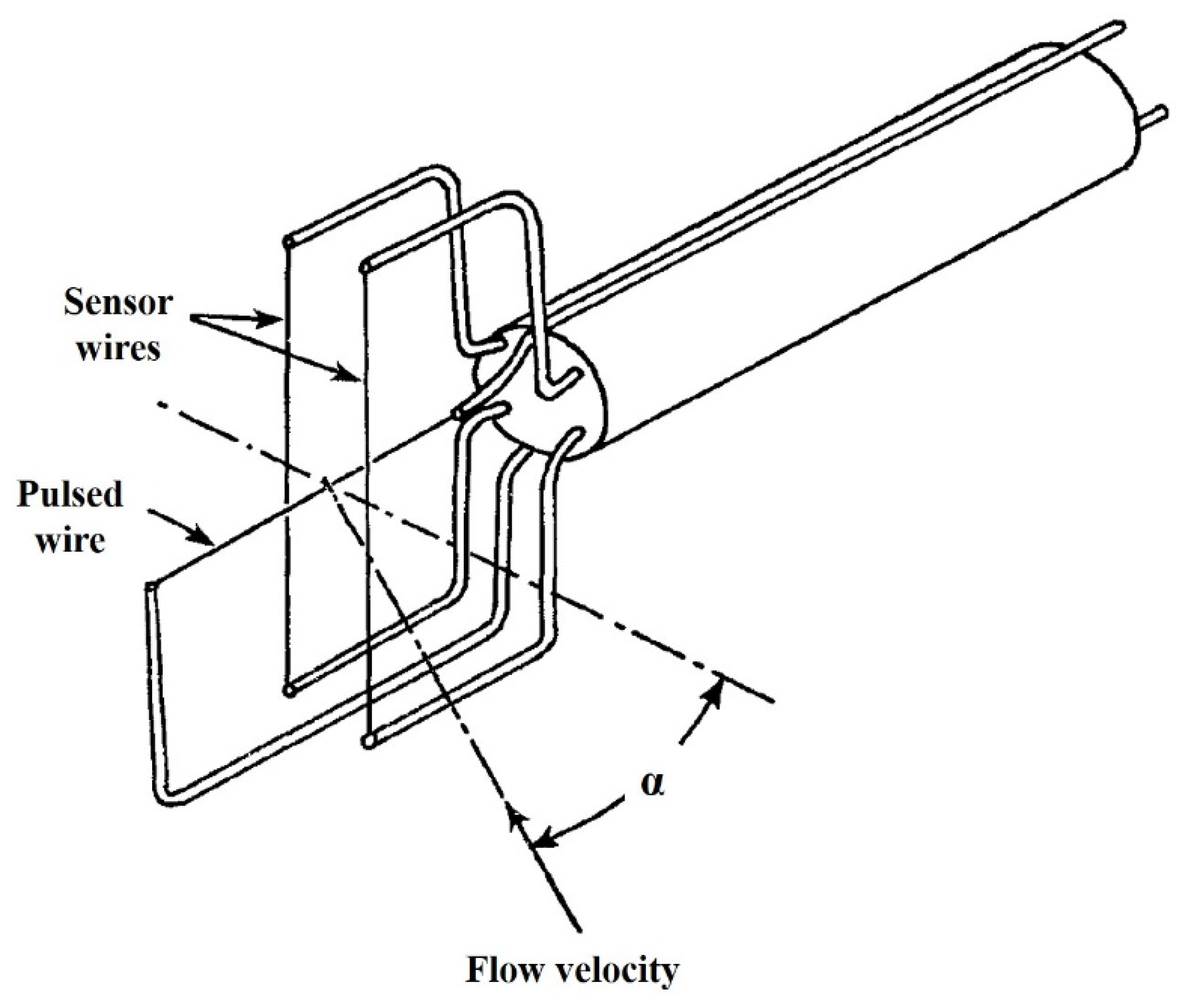
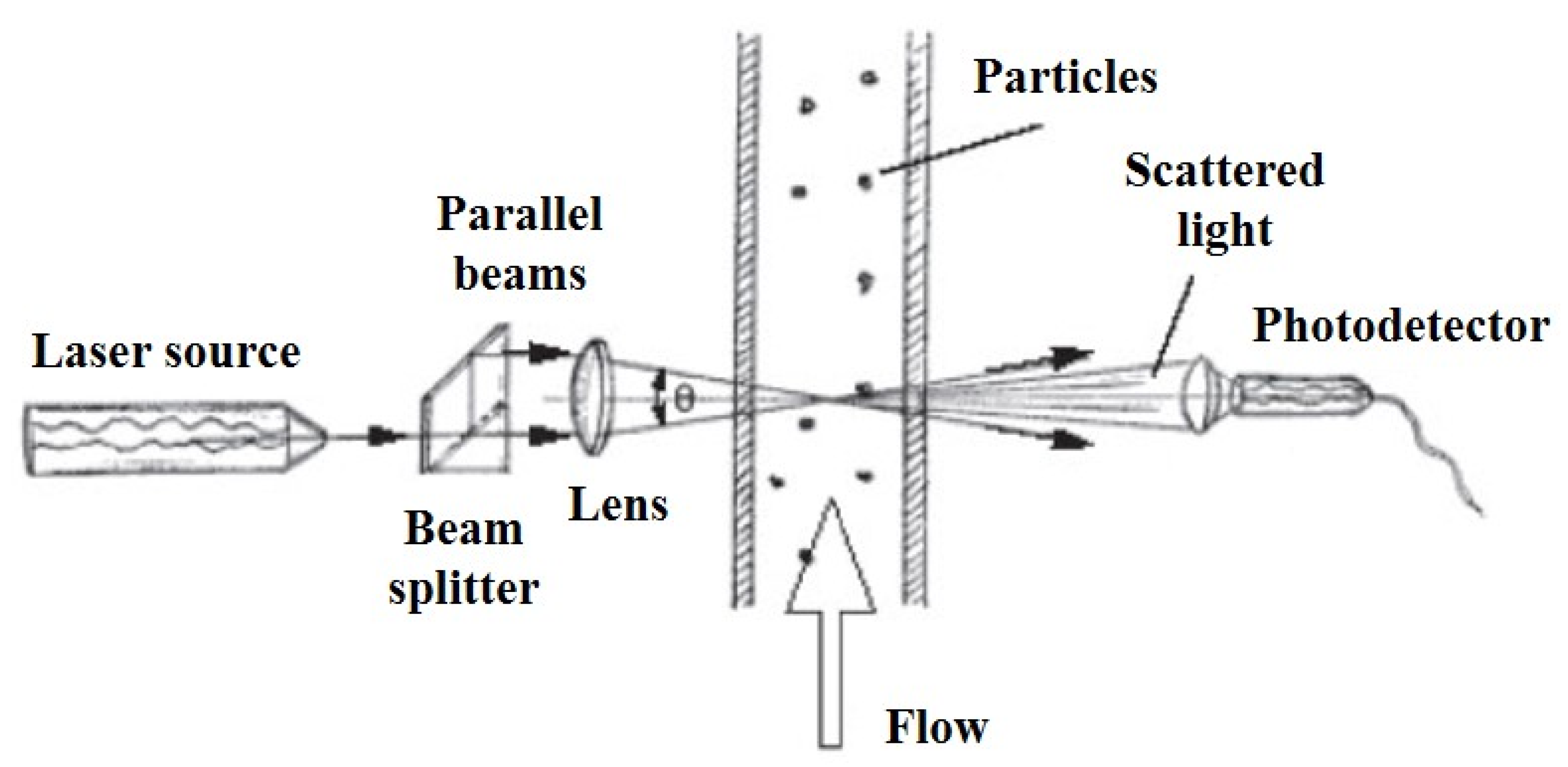

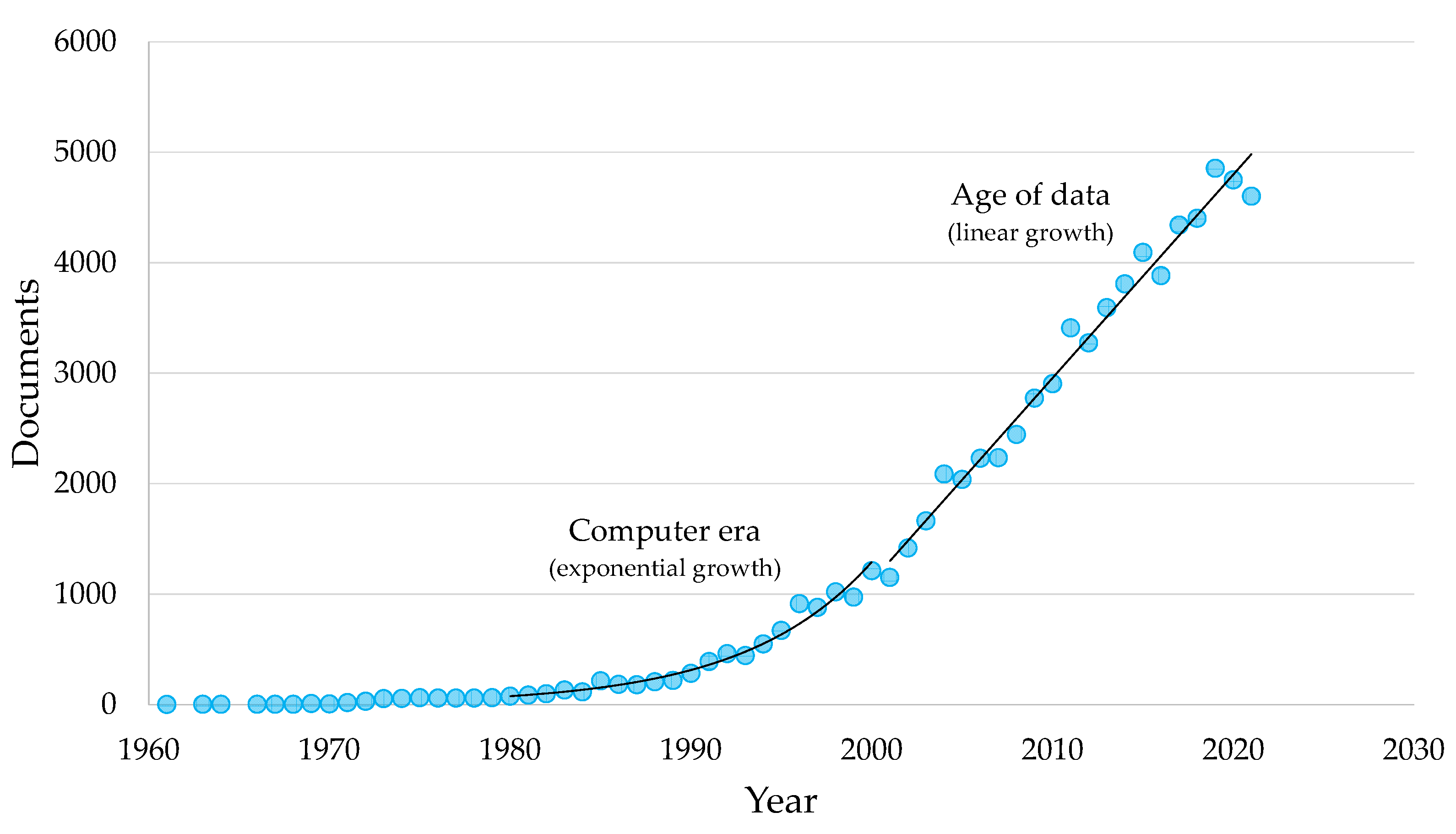

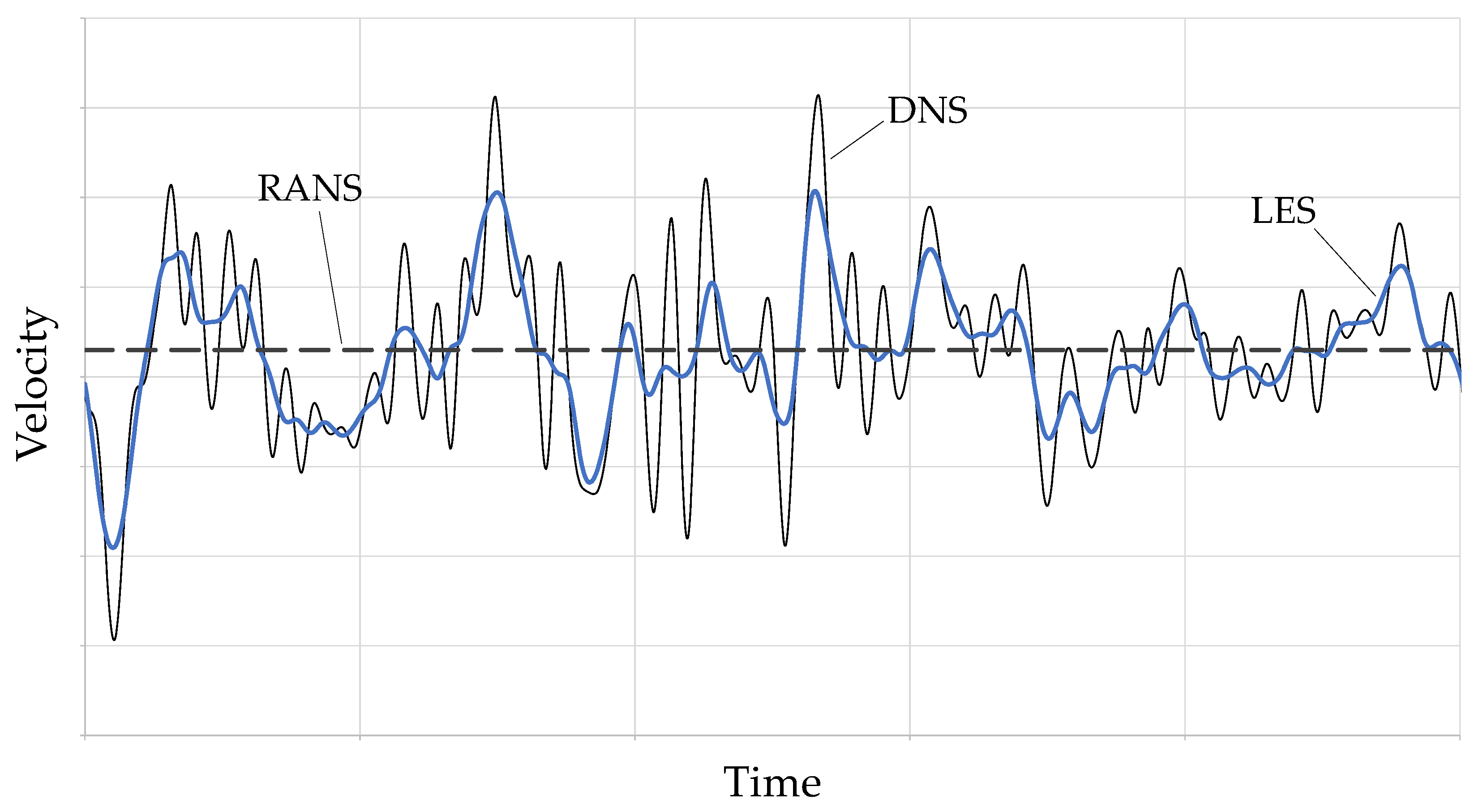
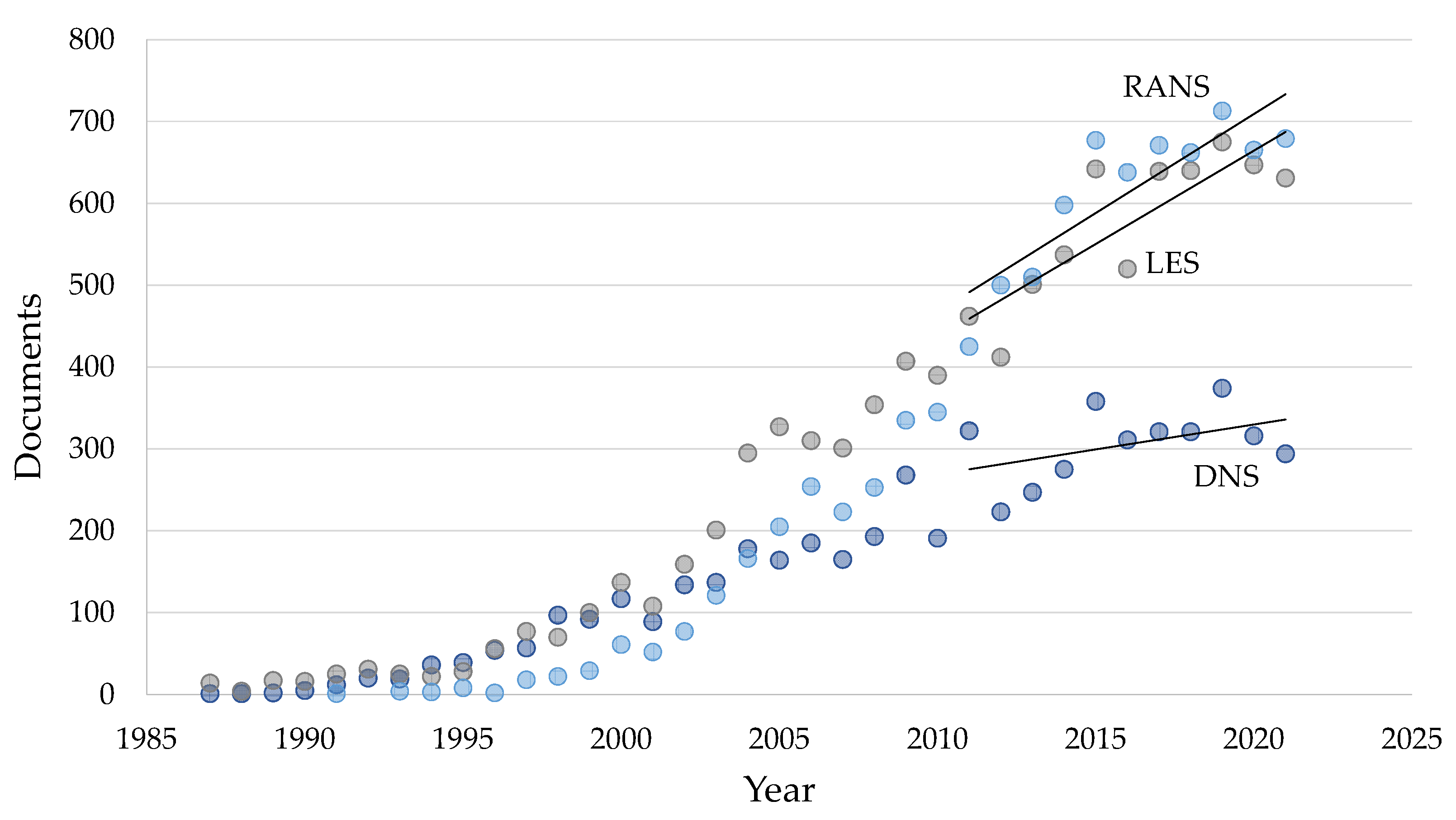

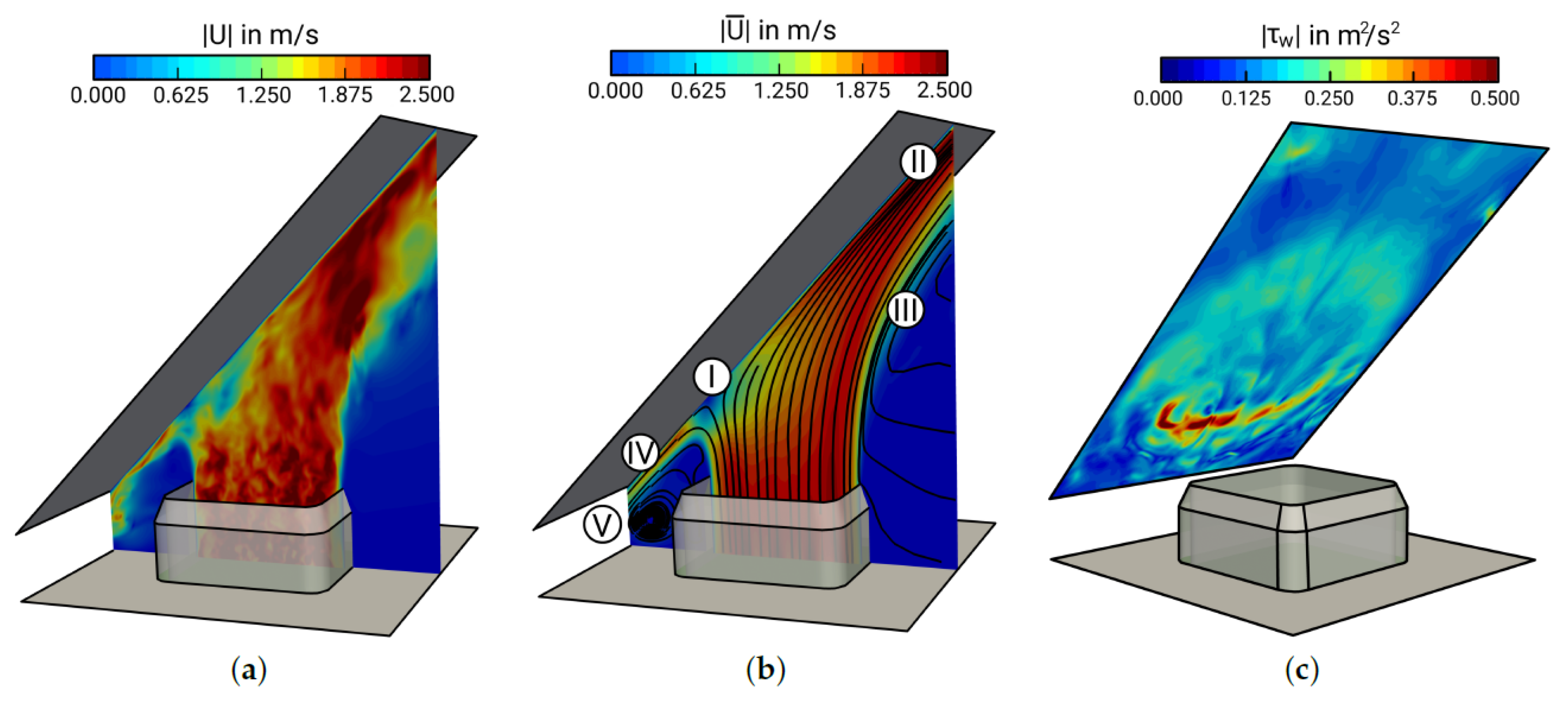
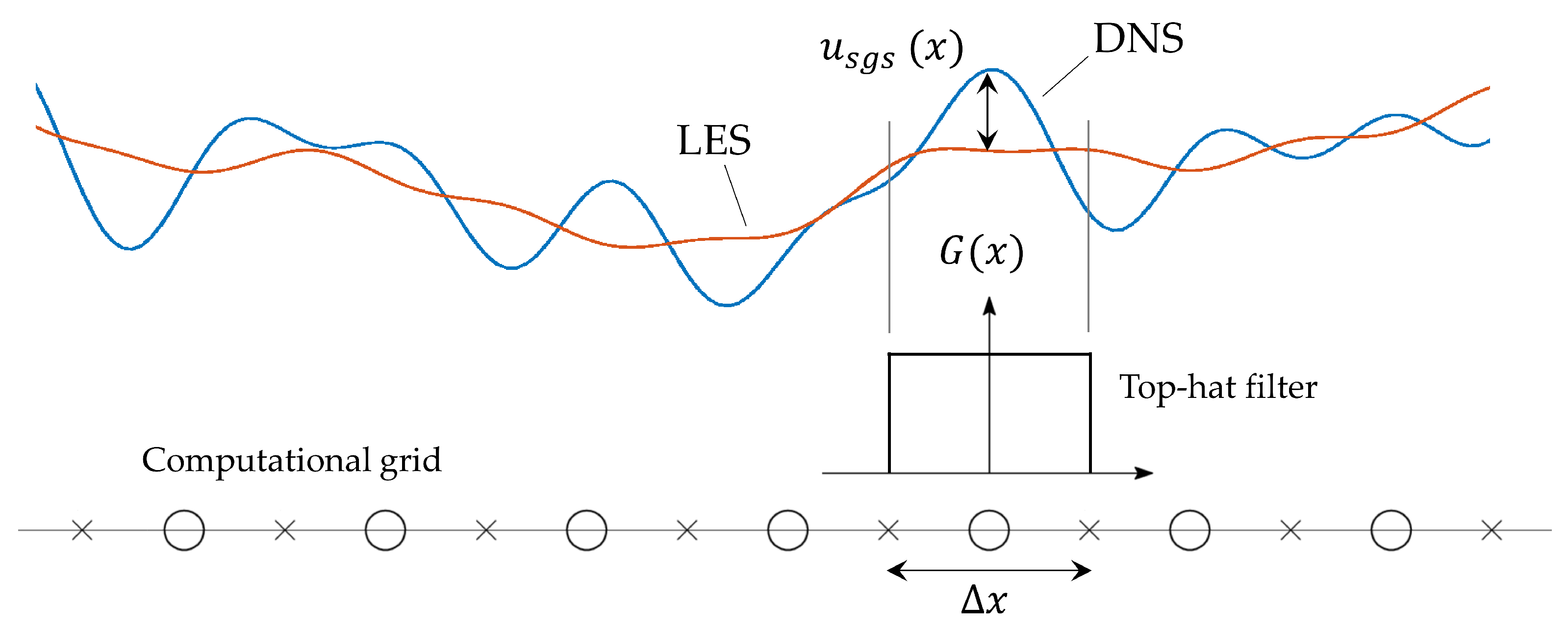


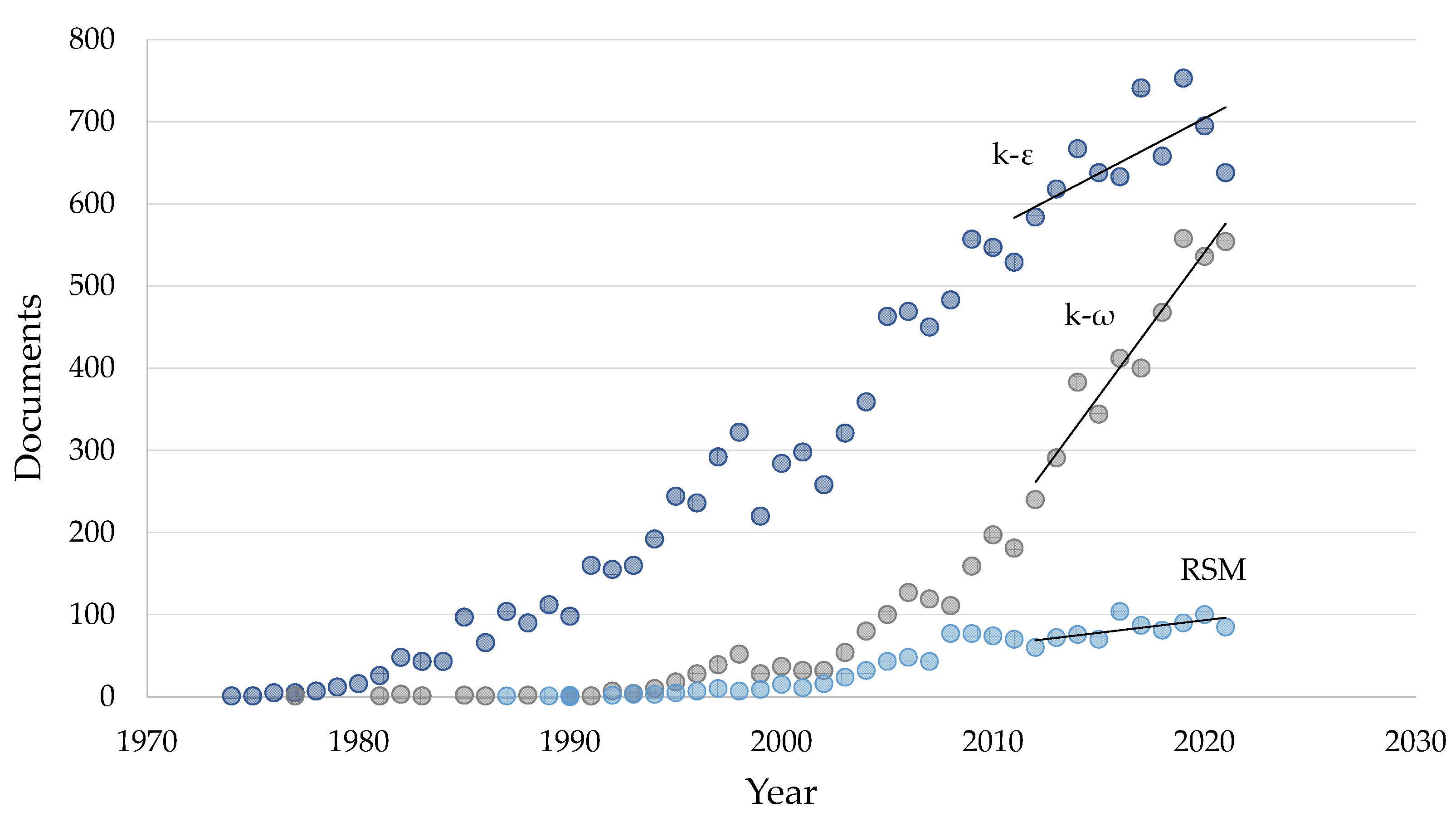
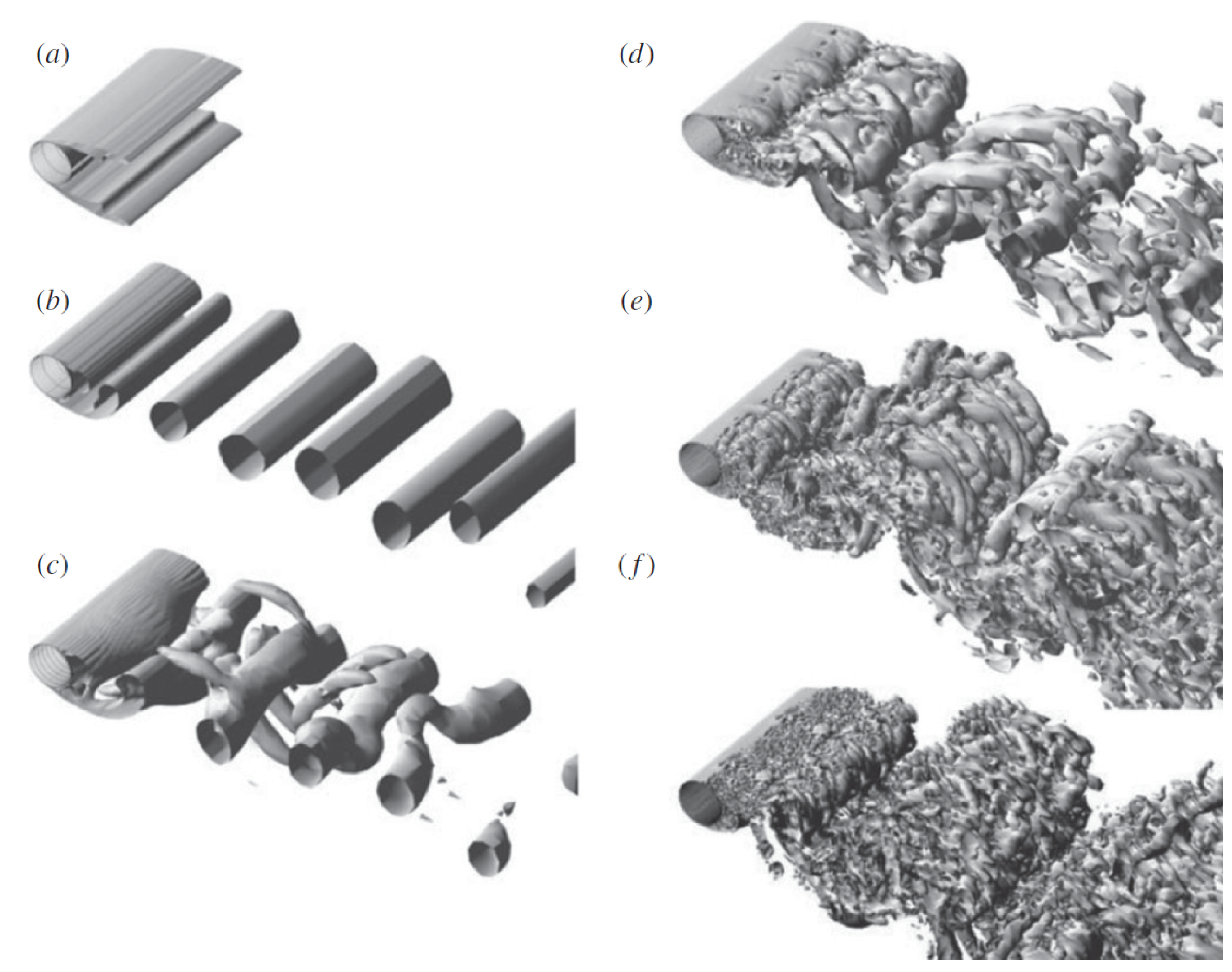
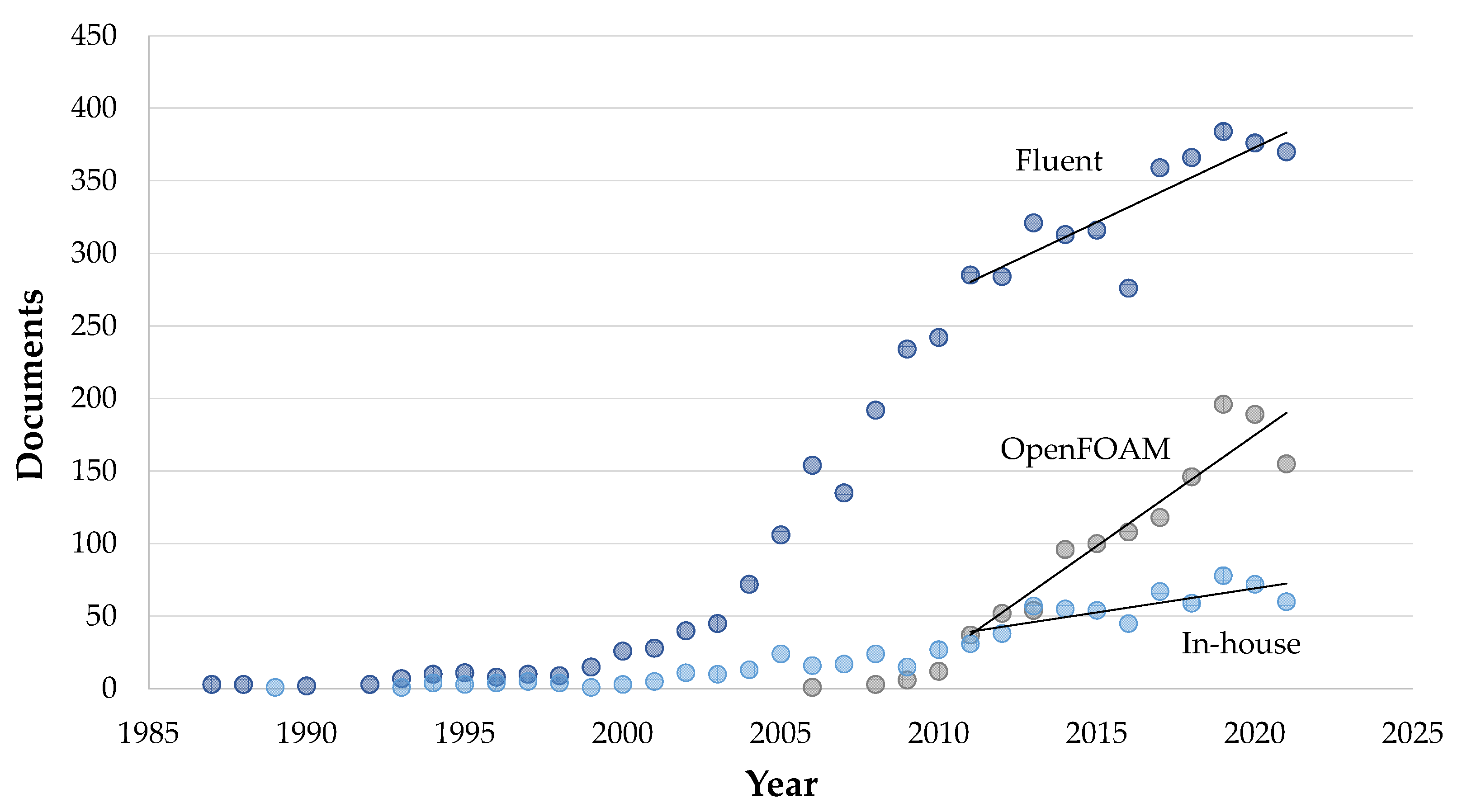
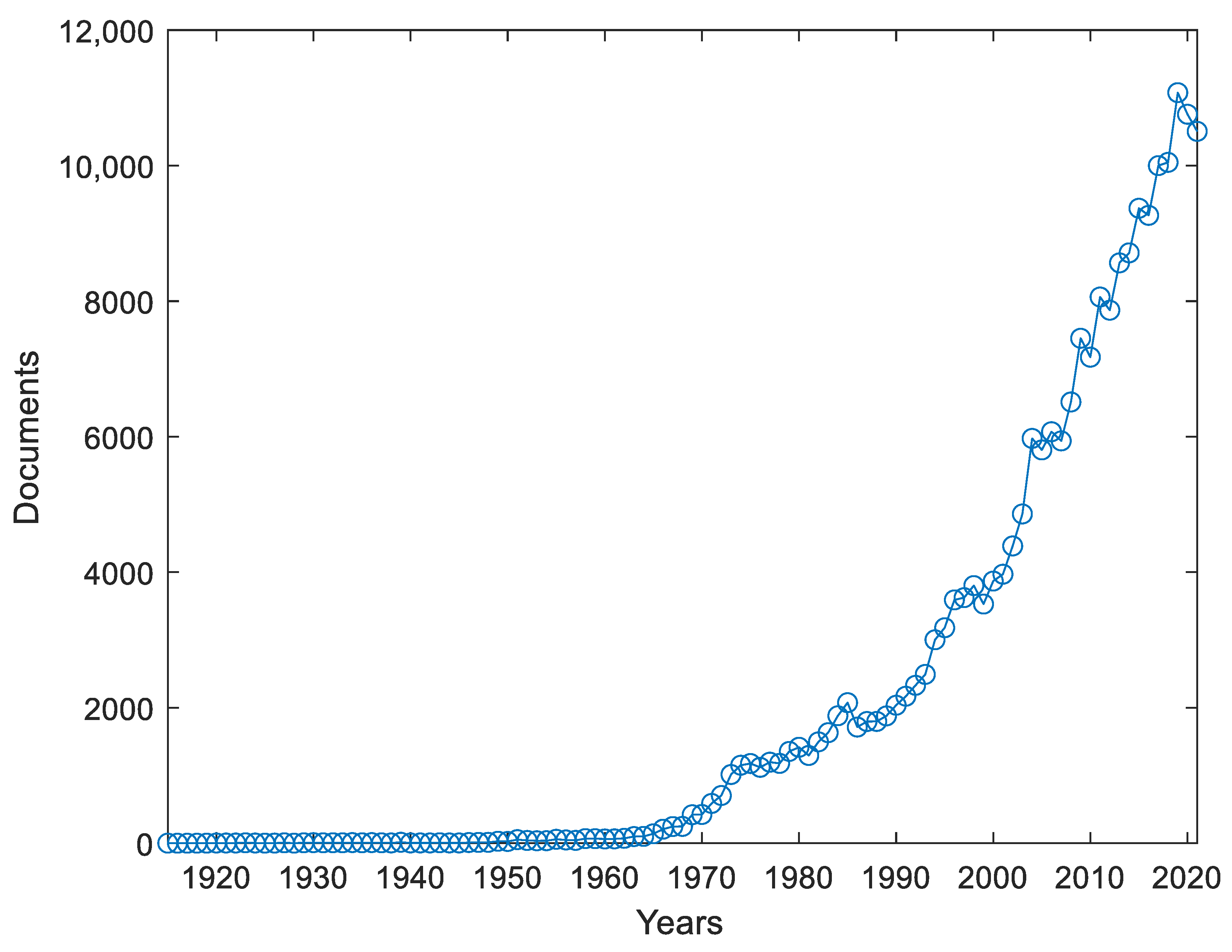

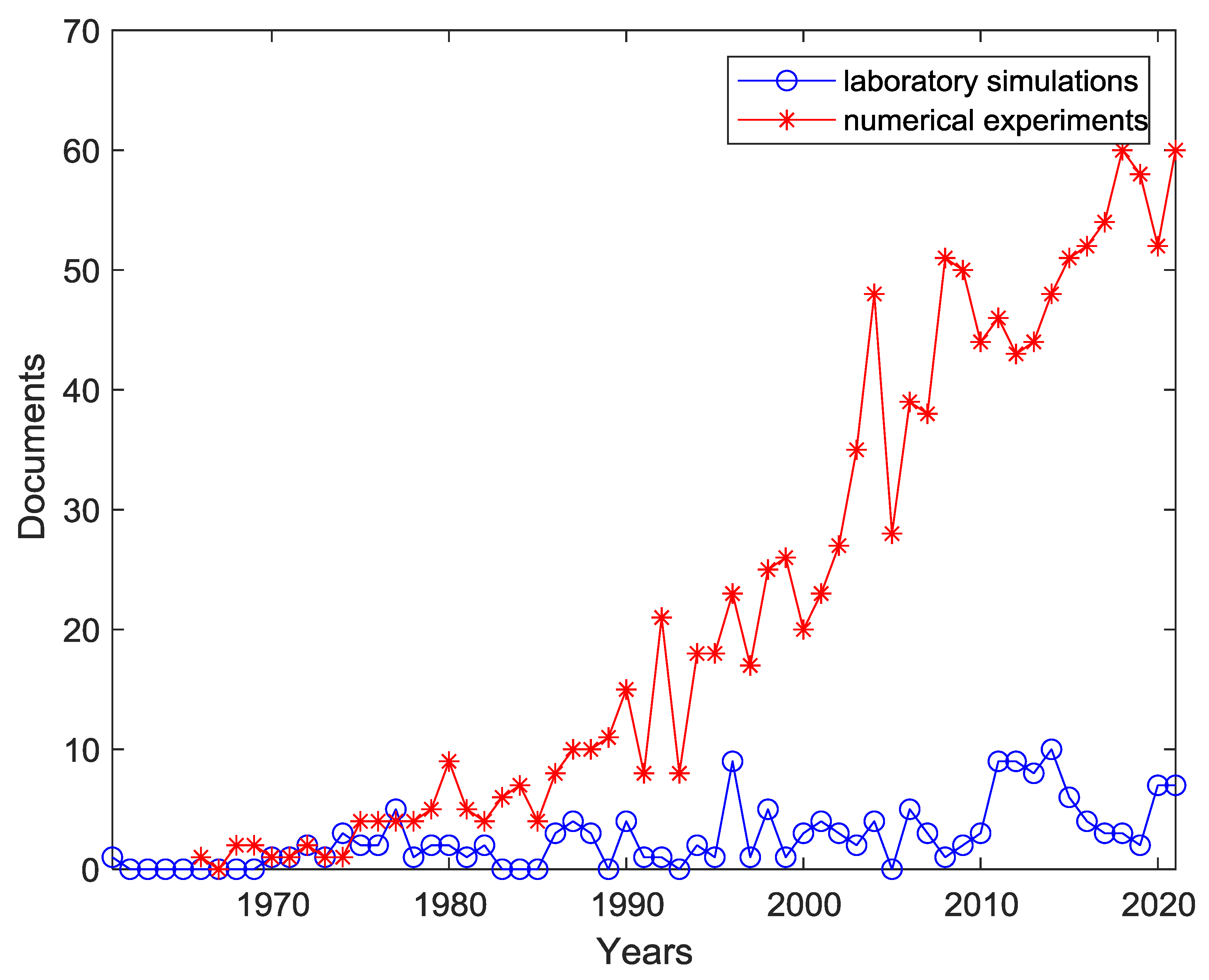
| Subject Area | % |
|---|---|
| Engineering | 28.99 |
| Physics and Astronomy | 20.85 |
| Earth and Planetary Sciences | 9.50 |
| Chemical Engineering | 7.38 |
| Mathematics | 5.65 |
| Energy | 4.98 |
| Materials Science | 4.85 |
| Environmental Science | 4.44 |
| Computer Science | 4.42 |
| Chemistry | 2.59 |
| Agricultural and Biological Sciences | 1.50 |
| Other | 4.84 |
| Subject Area | % |
|---|---|
| Engineering | 28.58 |
| Physics and Astronomy | 19.54 |
| Earth and Planetary Sciences | 9.10 |
| Chemical Engineering | 7.40 |
| Environmental Science | 6.22 |
| Energy | 5.74 |
| Materials Science | 5.53 |
| Mathematics | 4.70 |
| Computer Science | 3.87 |
| Chemistry | 2.94 |
| Agricultural and Biological Sciences | 2.34 |
| Medicine | 1.01 |
| Other | 3.03 |
| Subject Area | % |
|---|---|
| Engineering | 31.78 |
| Physics and Astronomy | 20.76 |
| Chemical Engineering | 9.63 |
| Earth and Planetary Sciences | 7.90 |
| Mathematics | 6.50 |
| Energy | 5.82 |
| Computer Science | 4.42 |
| Environmental Science | 3.88 |
| Materials Science | 3.70 |
| Chemistry | 2.71 |
| Other | 2.89 |
| Subject Area | % |
|---|---|
| Engineering | 30.97 |
| Physics and Astronomy | 16.77 |
| Environmental Science | 10.32 |
| Earth and Planetary Sciences | 9.68 |
| Energy | 5.81 |
| Materials Science | 5.16 |
| Mathematics | 5.16 |
| Computer Science | 3.87 |
| Chemical Engineering | 3.55 |
| Agricultural and Biological Sciences | 2.58 |
| Chemistry | 1.94 |
| Other | 4.19 |
| Subject Area | % |
|---|---|
| Engineering | 24.74 |
| Physics and Astronomy | 22.39 |
| Earth and Planetary Sciences | 14.95 |
| Mathematics | 10.21 |
| Computer Science | 6.76 |
| Chemical Engineering | 6.34 |
| Environmental Science | 4.83 |
| Materials Science | 2.94 |
| Energy | 2.86 |
| Chemistry | 1.34 |
| Agricultural and Biological Sciences | 1.18 |
| Other | 1.47 |
Publisher’s Note: MDPI stays neutral with regard to jurisdictional claims in published maps and institutional affiliations. |
© 2022 by the authors. Licensee MDPI, Basel, Switzerland. This article is an open access article distributed under the terms and conditions of the Creative Commons Attribution (CC BY) license (https://creativecommons.org/licenses/by/4.0/).
Share and Cite
Ferrari, S.; Rossi, R.; Di Bernardino, A. A Review of Laboratory and Numerical Techniques to Simulate Turbulent Flows. Energies 2022, 15, 7580. https://doi.org/10.3390/en15207580
Ferrari S, Rossi R, Di Bernardino A. A Review of Laboratory and Numerical Techniques to Simulate Turbulent Flows. Energies. 2022; 15(20):7580. https://doi.org/10.3390/en15207580
Chicago/Turabian StyleFerrari, Simone, Riccardo Rossi, and Annalisa Di Bernardino. 2022. "A Review of Laboratory and Numerical Techniques to Simulate Turbulent Flows" Energies 15, no. 20: 7580. https://doi.org/10.3390/en15207580






